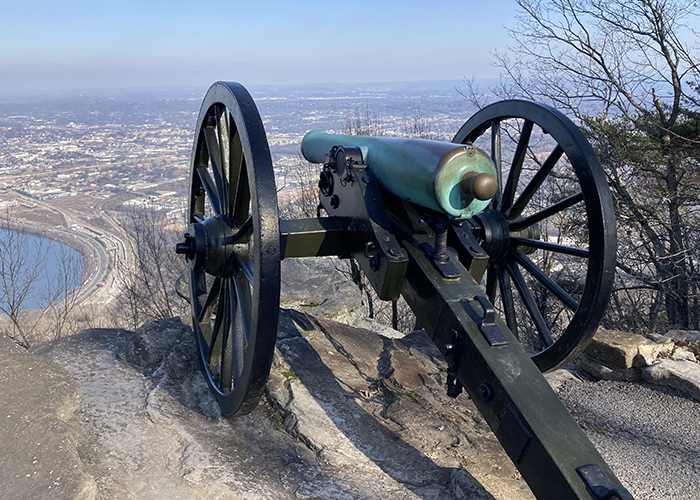 More 2022 Adventures |
Atlanta, GA → Chattanooga, TN → Anniston, AL 312.0 mi (502.1 km) |
 Next Day |
Happy New Year, everyone!
I’m embarking on a new adventure in a new hat! In 2022, I’ll be heading where the deals take me, and today’s deal is taking me to the peachy state of Georgia for the first time. For one long weekend, I’m leaving behind the 36,000 new daily COVID-19 cases in LA County and spending some much needed time outdoors! I planned to visit three national park sites in three different states today, starting with Kennesaw Mountain National Battlefield Park!
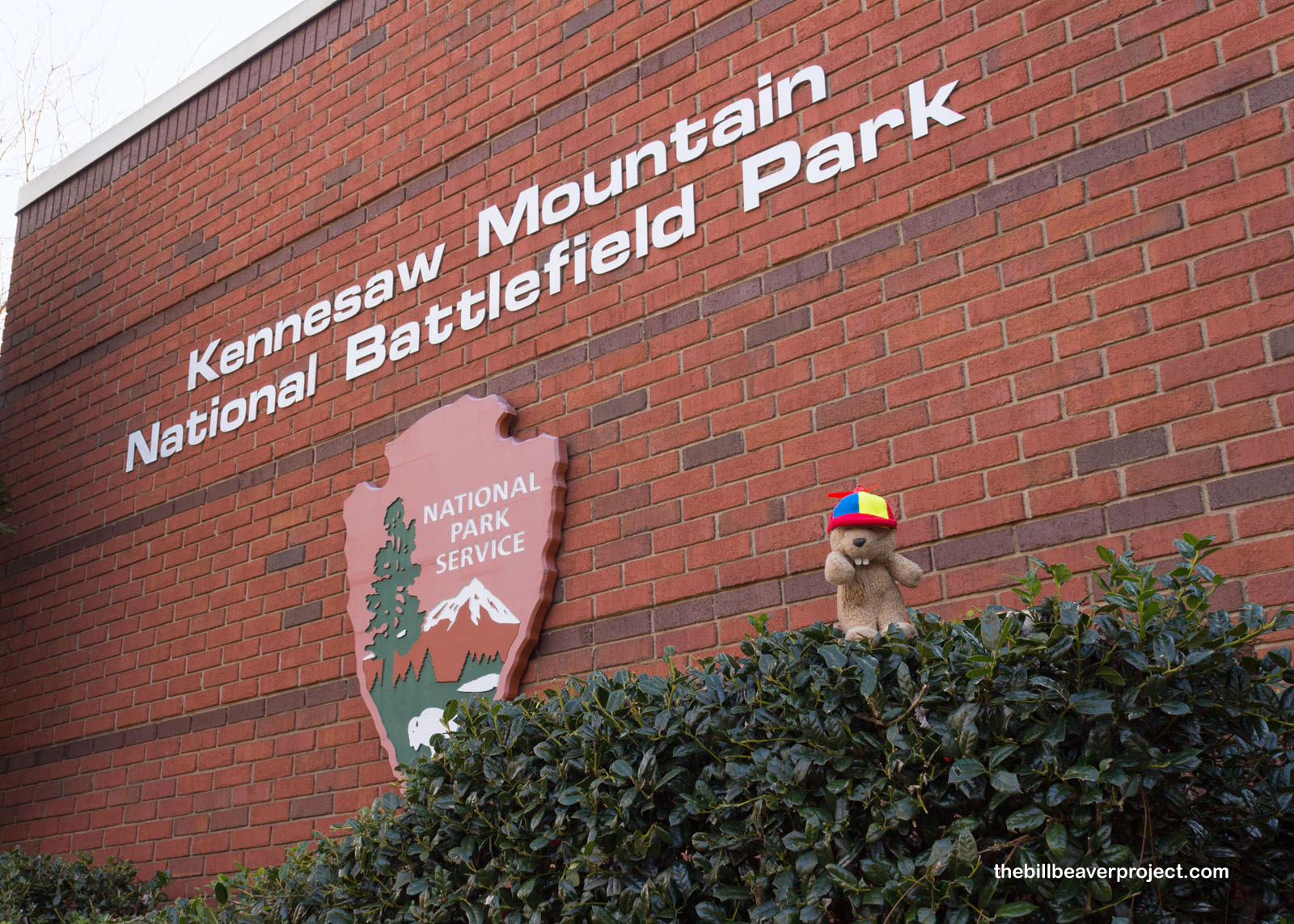 |
Kennesaw Mountain was a major Confederate defense along General Sherman’s route to attack Atlanta in 1864, so it made sense that the first monument I came across at the base of the mountain was to Georgia’s Confederate soldiers. There’s been a lot of controversy about Confederate monuments around the country, but if there were ever an appropriate place for one, it’s on a historic battlefield!
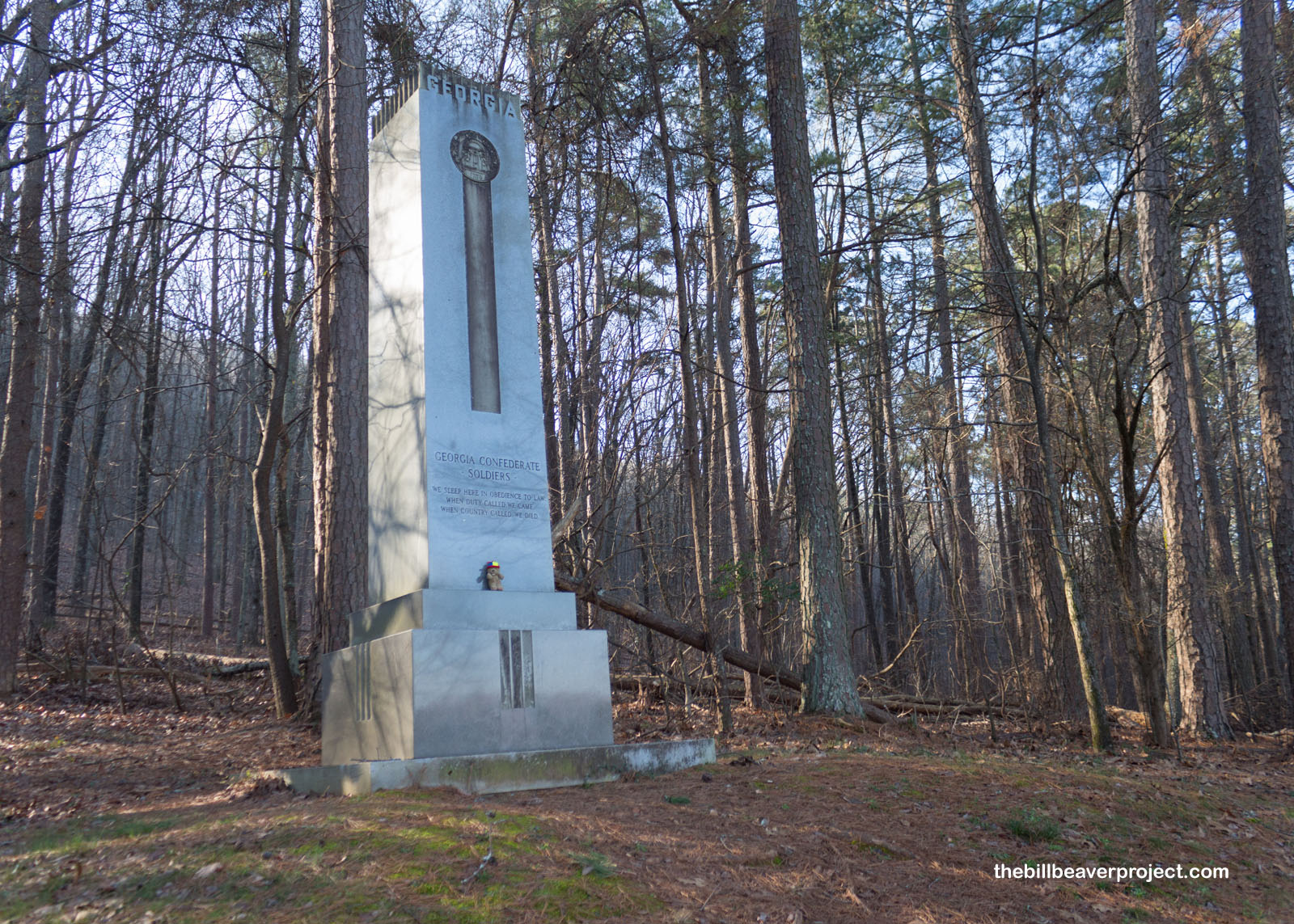 |
It was a chilly January morning, but I was ready for a hike nonetheless. Though Kennesaw Mountain is only 1,808 feet high, just high enough to be a mountain, not a hill, I couldn’t resist the call of a trail to the top! Not even a mile? What a breeze!
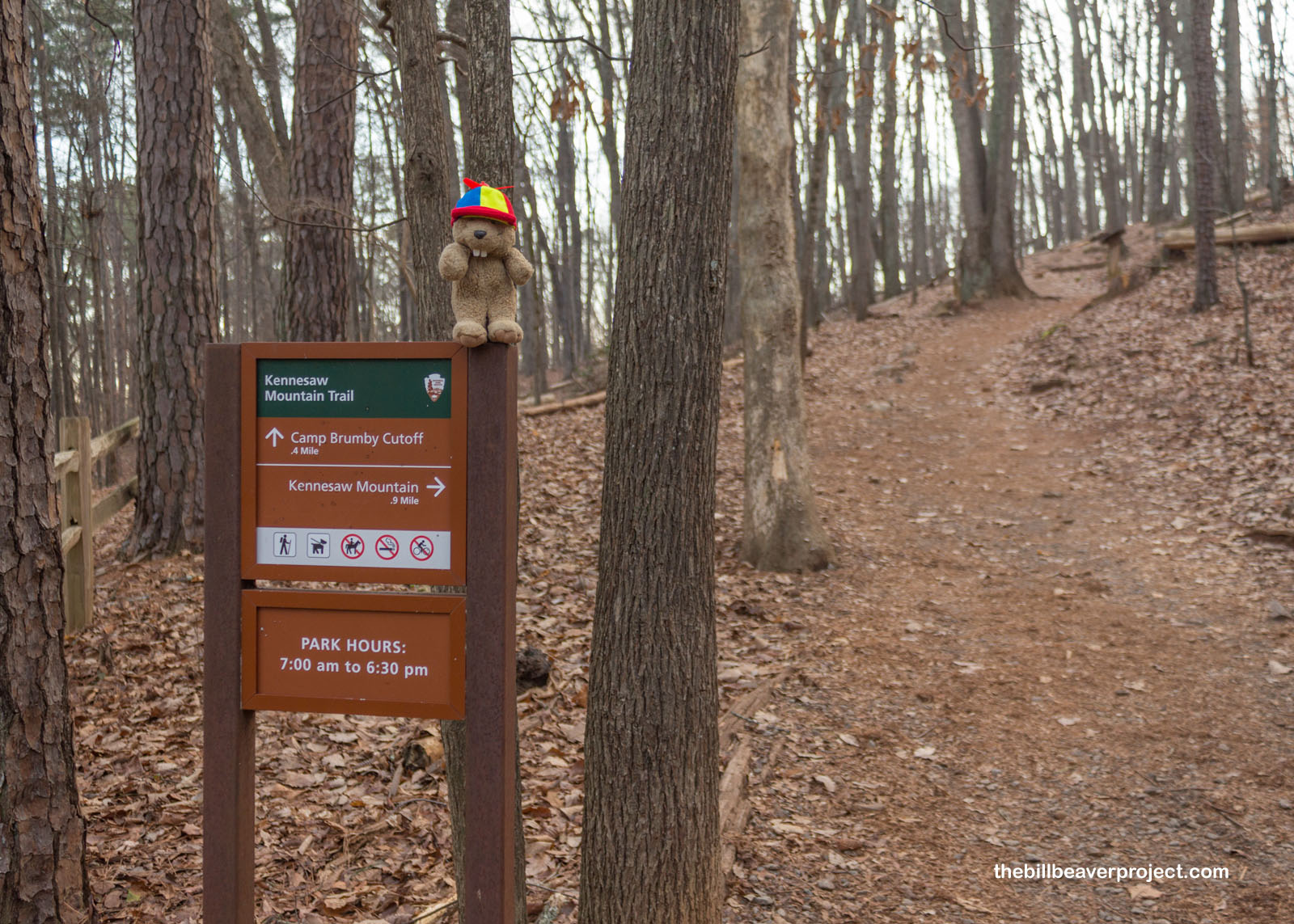 |
In June of 1864, Kennesaw Mountain was completely fortified from top to bottom and seven miles lengthwise! Until this point, General Sherman and General Johnston had been dancing back and forth, mile by mile, but Kennesaw Mountain was enough of a roadblock that the Union troops had to engage somehow! So on the 24th, General Sherman moved troops into position, and on the 27th, the cannons went off!
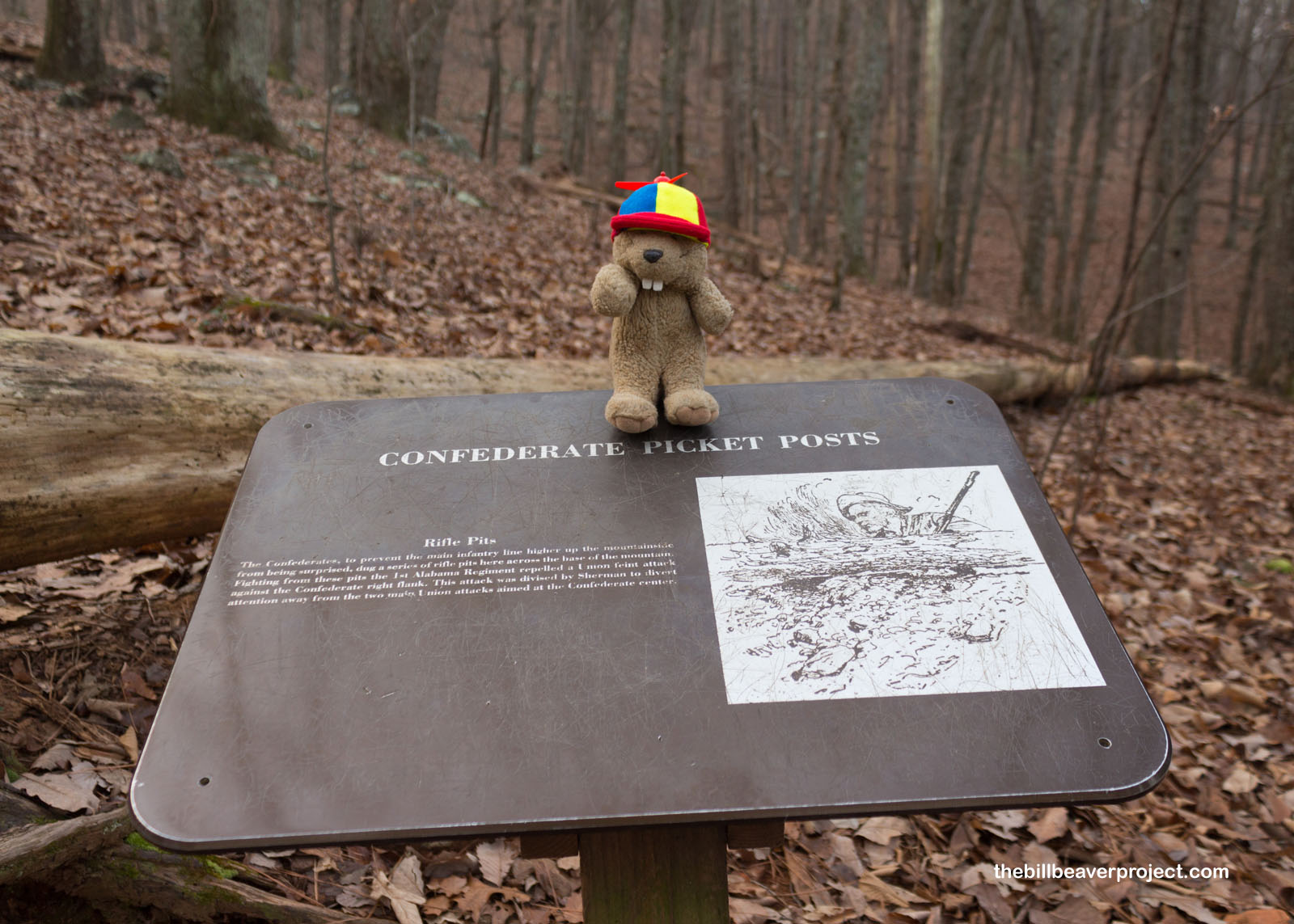 |
As you can imagine, this was an uphill battle in all senses! The trail to the top was a pretty light slope, but in 1864, there weren’t nicely maintained trails leading to all the Confederate fortifications! Also, it was summer time, so the brush was thicker and denser, with less visibility! Plus, the whole time the Union soldiers were slogging through the brush, they were getting shot from above! The whole battle of Kennesaw Mountain only lasted about three hours, and by the end of it, the Union army had lost 3,000 soldiers and the Confederates 800!
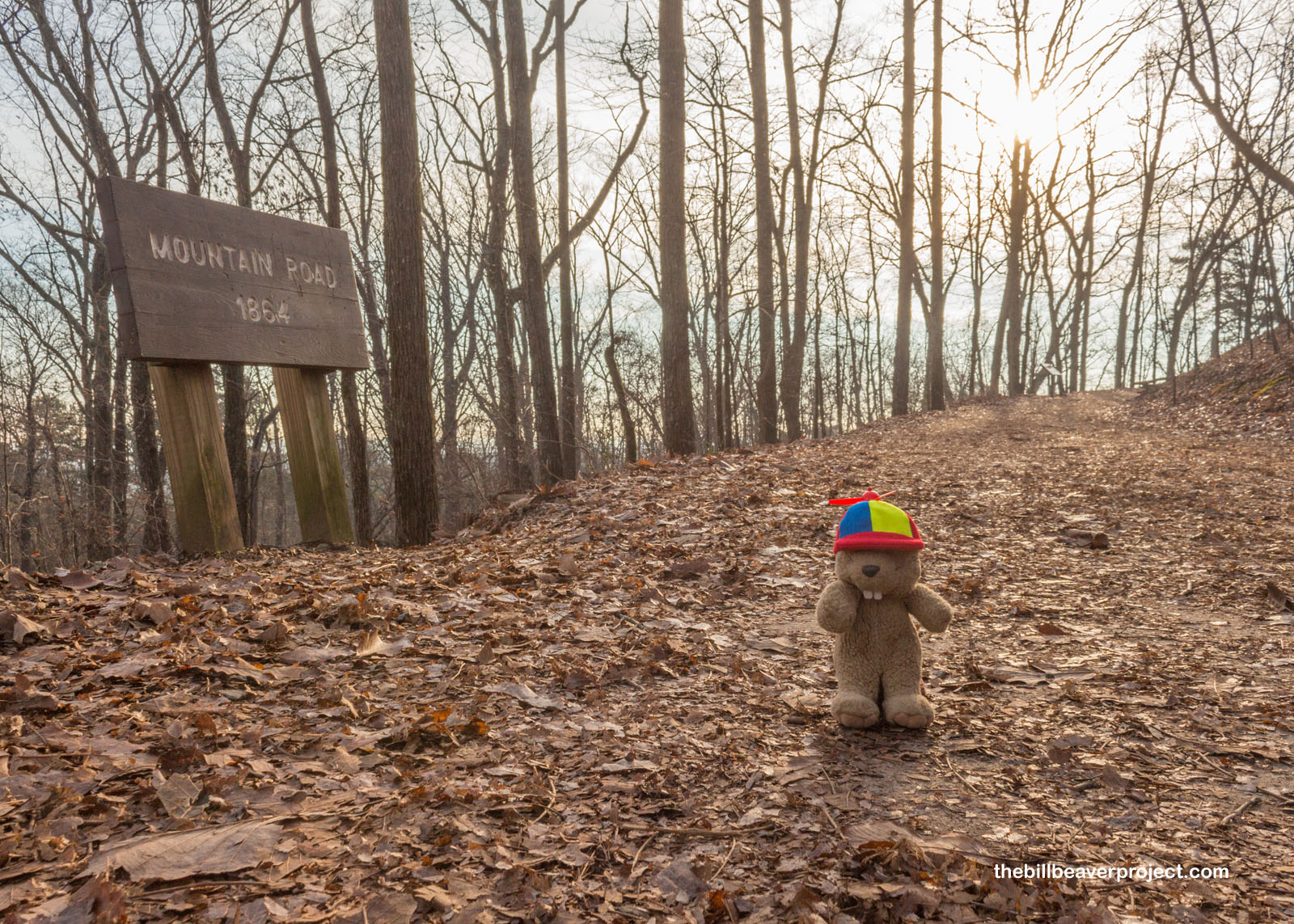 |
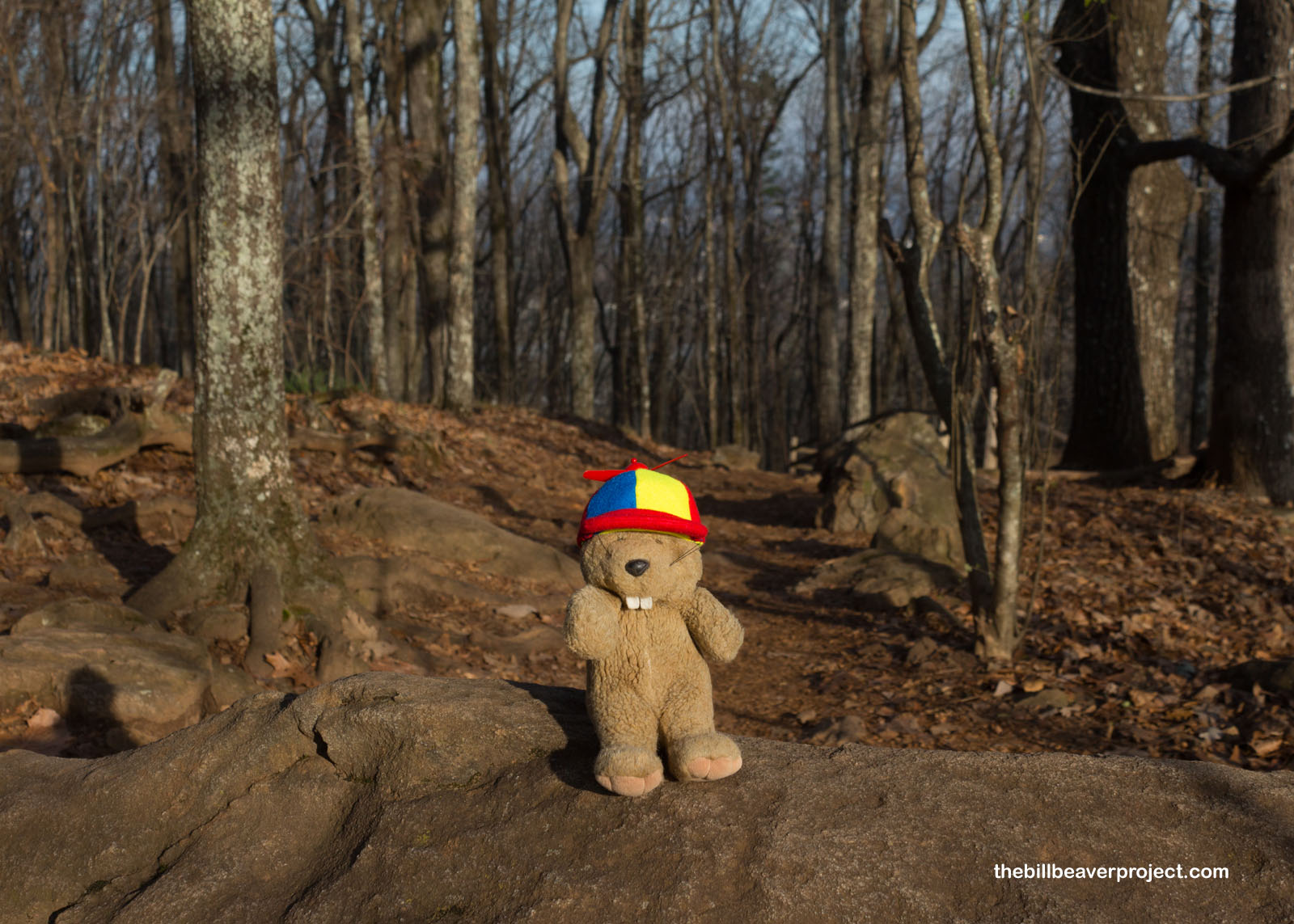 |
The higher I got, the easier it was to see how thoroughly this mountain had been defended, with rows upon rows of markers for old Confederate rifle pits. It hadn’t been the best move, and the Union forces had to admit defeat in this battle, before realizing they could just go around the mountain. It only took a small force crossing the Chattahoochee River to surprise General Johnston and force his retreat, giving the Union access to their prize: Atlanta!
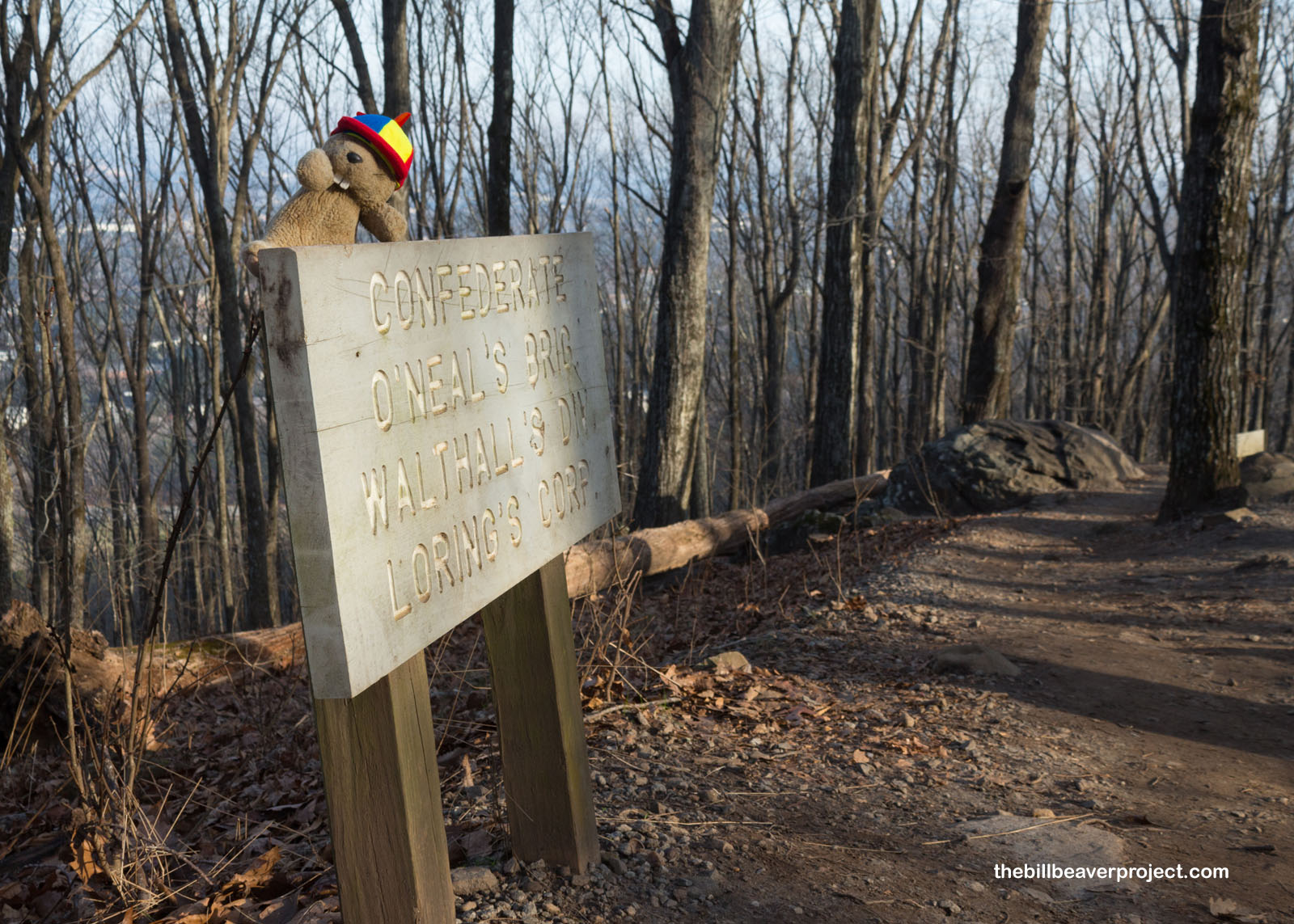 |
The air was pretty hazy today, but somewhere off in the gray was General Sherman’s first prize, an important hub for manufacture and rail transport for the Confederacy. He burned Atlanta to ruins, and a big chunk of the Confederate economy with is, as he began his “March to the Sea,” famously saying “War is cruelty and you cannot refine it.”
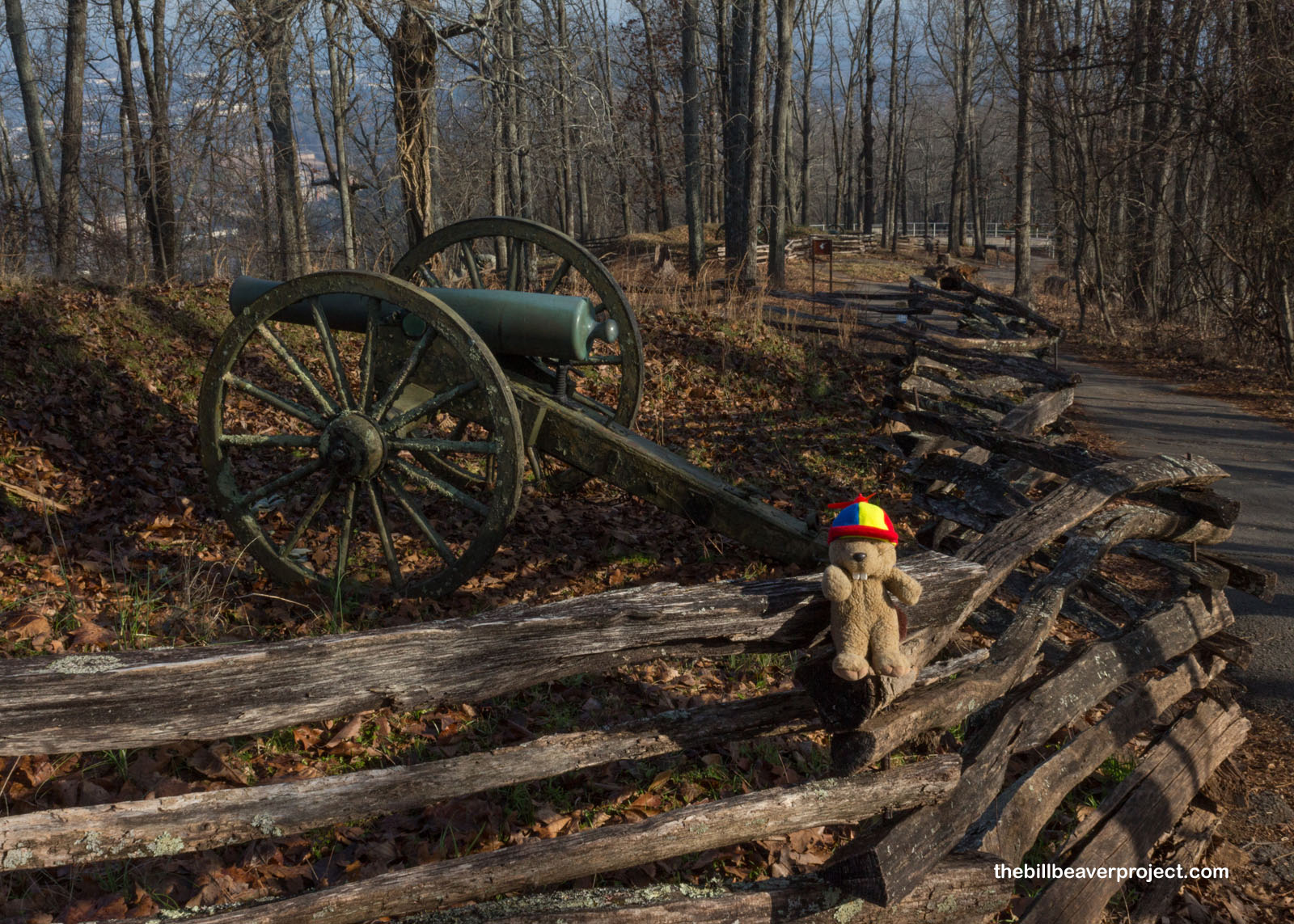 |
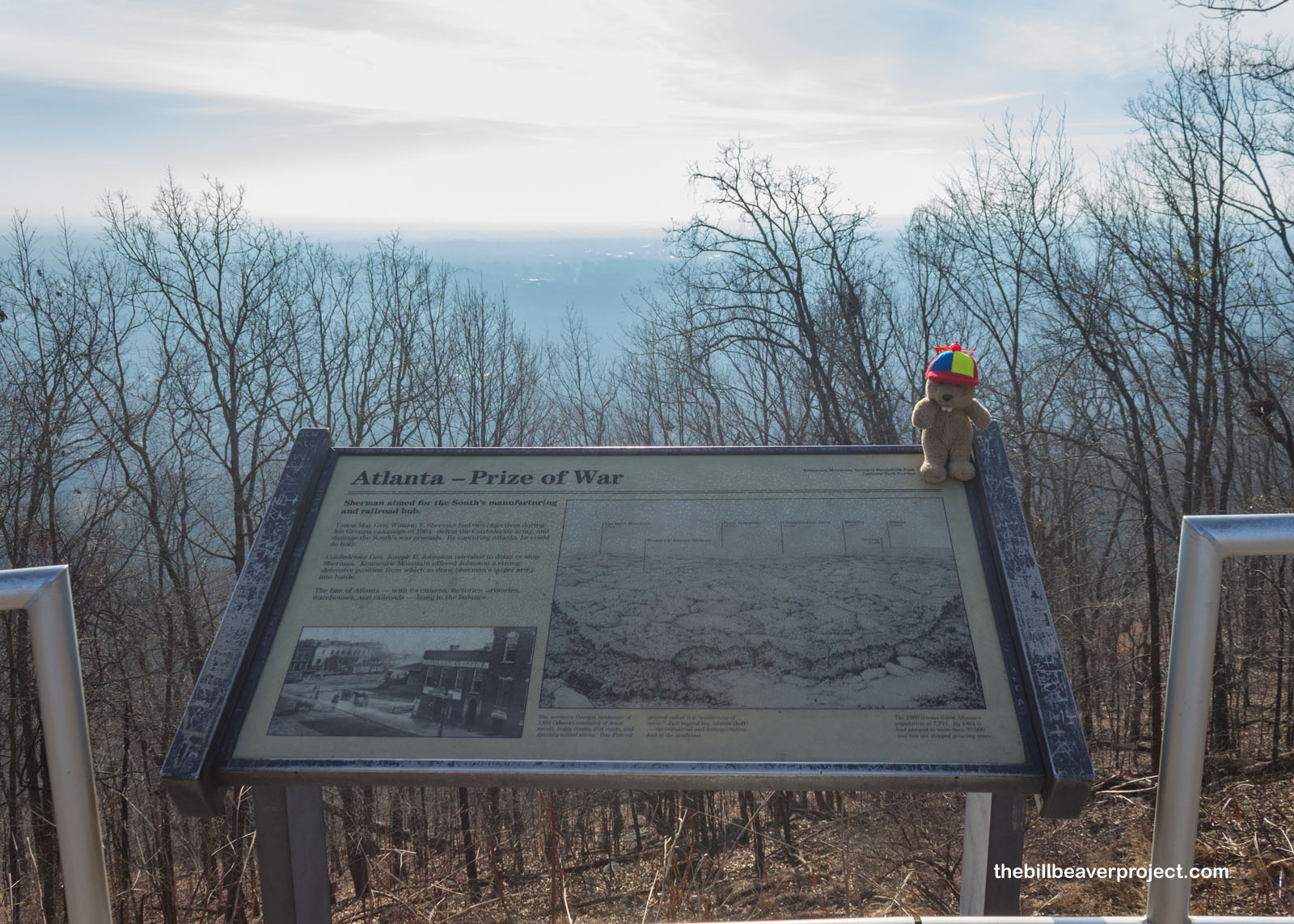 |
But unlike General Sherman, my path today led away from Atlanta and back in time to the year before Kennesaw Mountain. In September, 1863, major Union victories at Gettysburg and Vicksburg were turning the tide against the Confederacy, and President Lincoln wanted the next conquest to be the famed railroads of Chattanooga, Tennessee! Like the president, my sights were also set on the northern Georgia border!
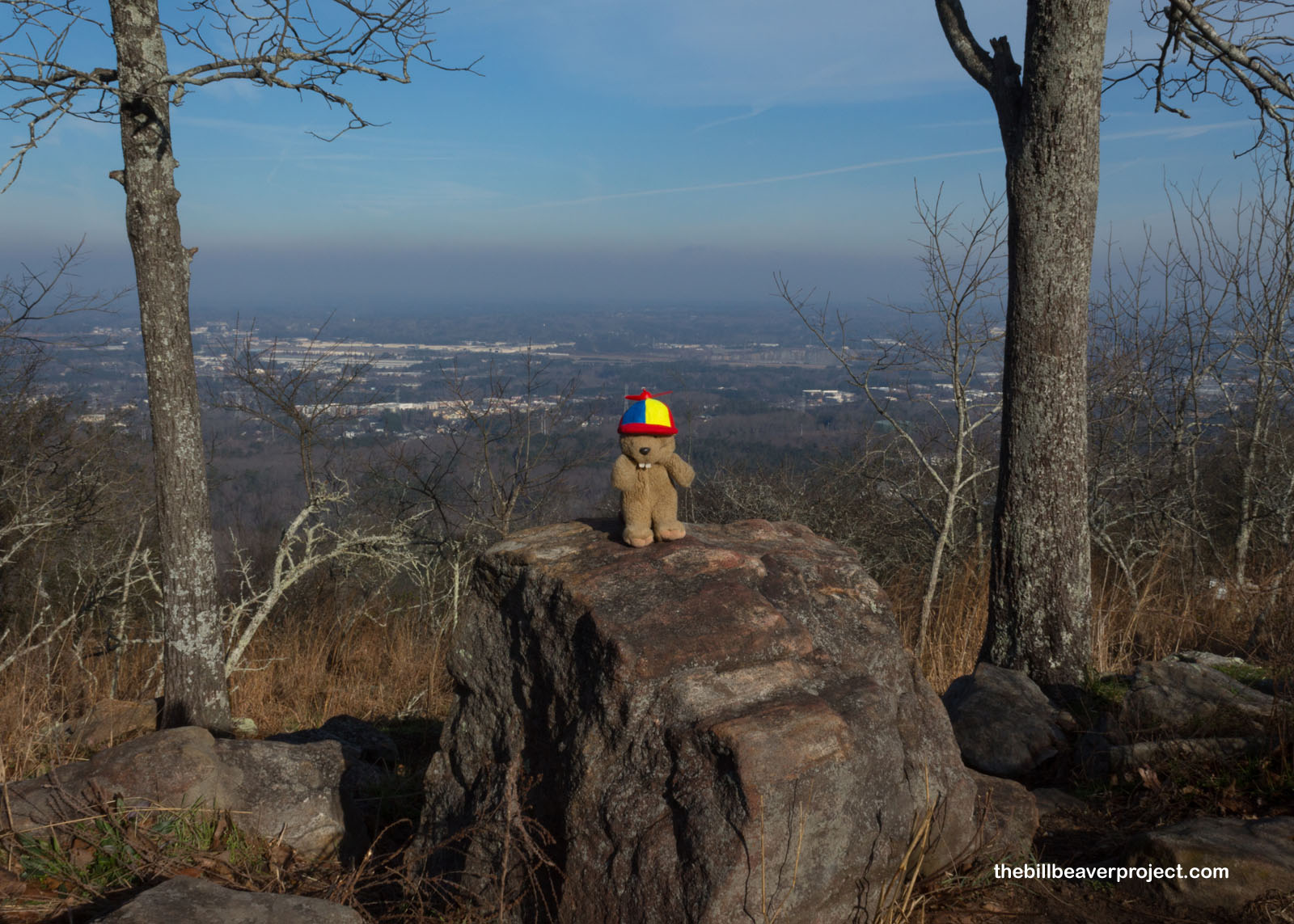 |
Chickamauga & Chattanooga National Military Park was the first of its kind, signed into existence in 1890 by President Harrison. At the time, there were so many Civil War veterans in Congress, including seven who served at Chickamauga, that the motion passed in 23 minutes in the House and was not opposed in the Senate. This park lay the foundation for future military parks like Gettysburg and Guilford Courthouse!
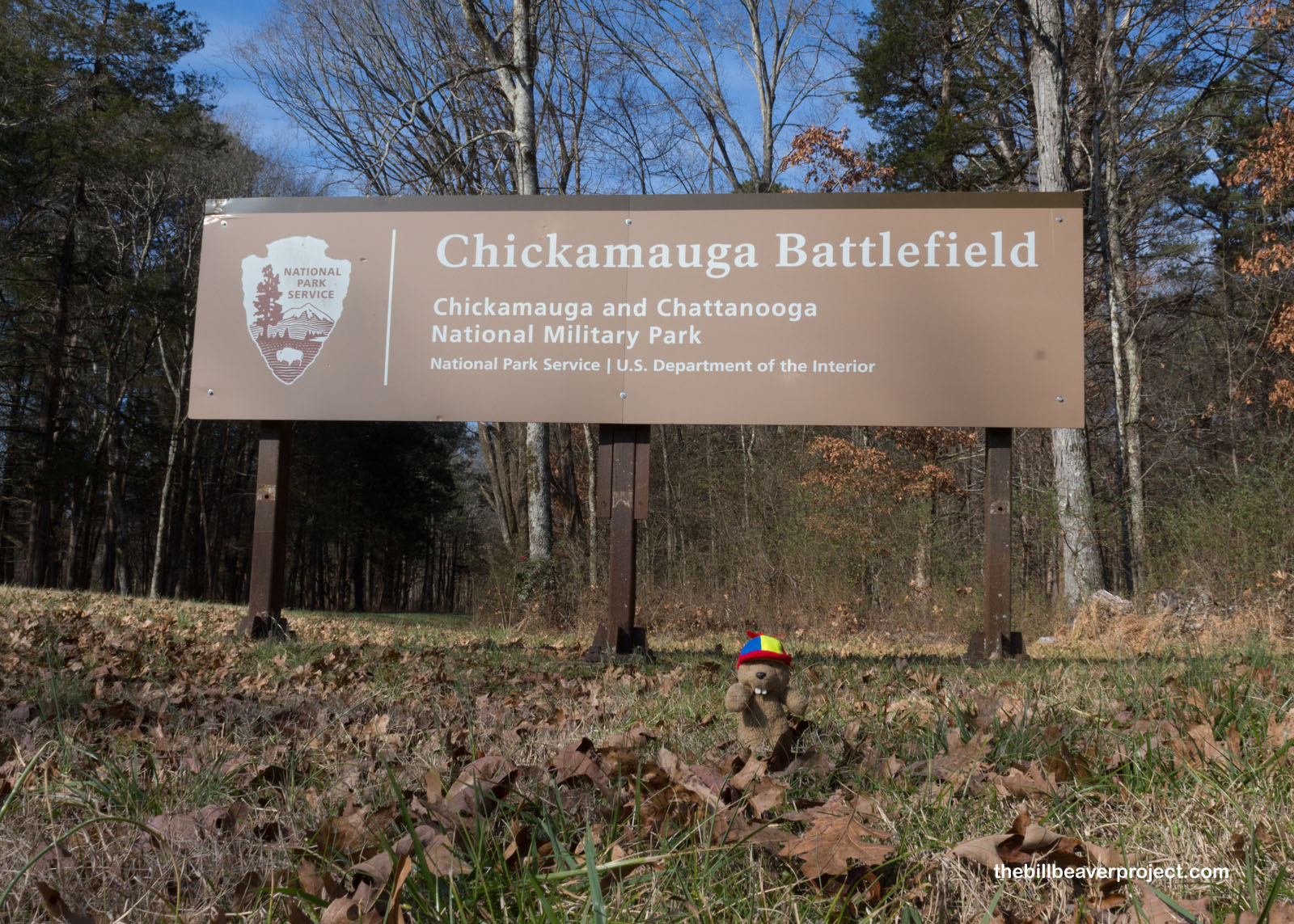 |
Like Gettysburg, the Chickamauga Battlefield was overflowing with monuments to the various states and their regiments who clashed here from September 18-20, 1863. With General William Rosecrans leading the Union and General Braxton Bragg on the Confederate side, this was one ferocious battle as the Union snuck in south of Chattanooga and engaged the Confederates at Chickamauga Creek! The 7-mile road through the battlefield told major parts of this story!
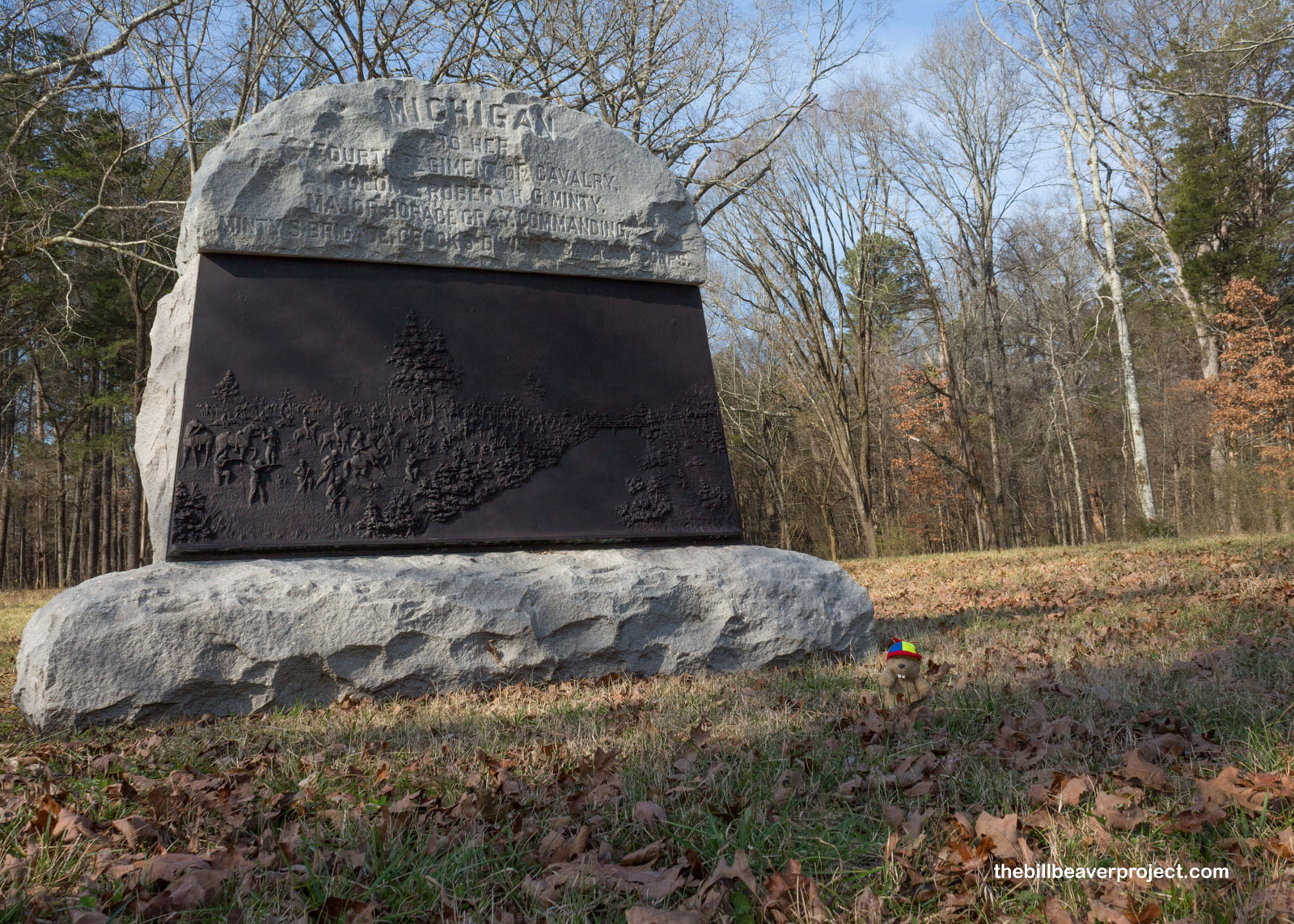 |
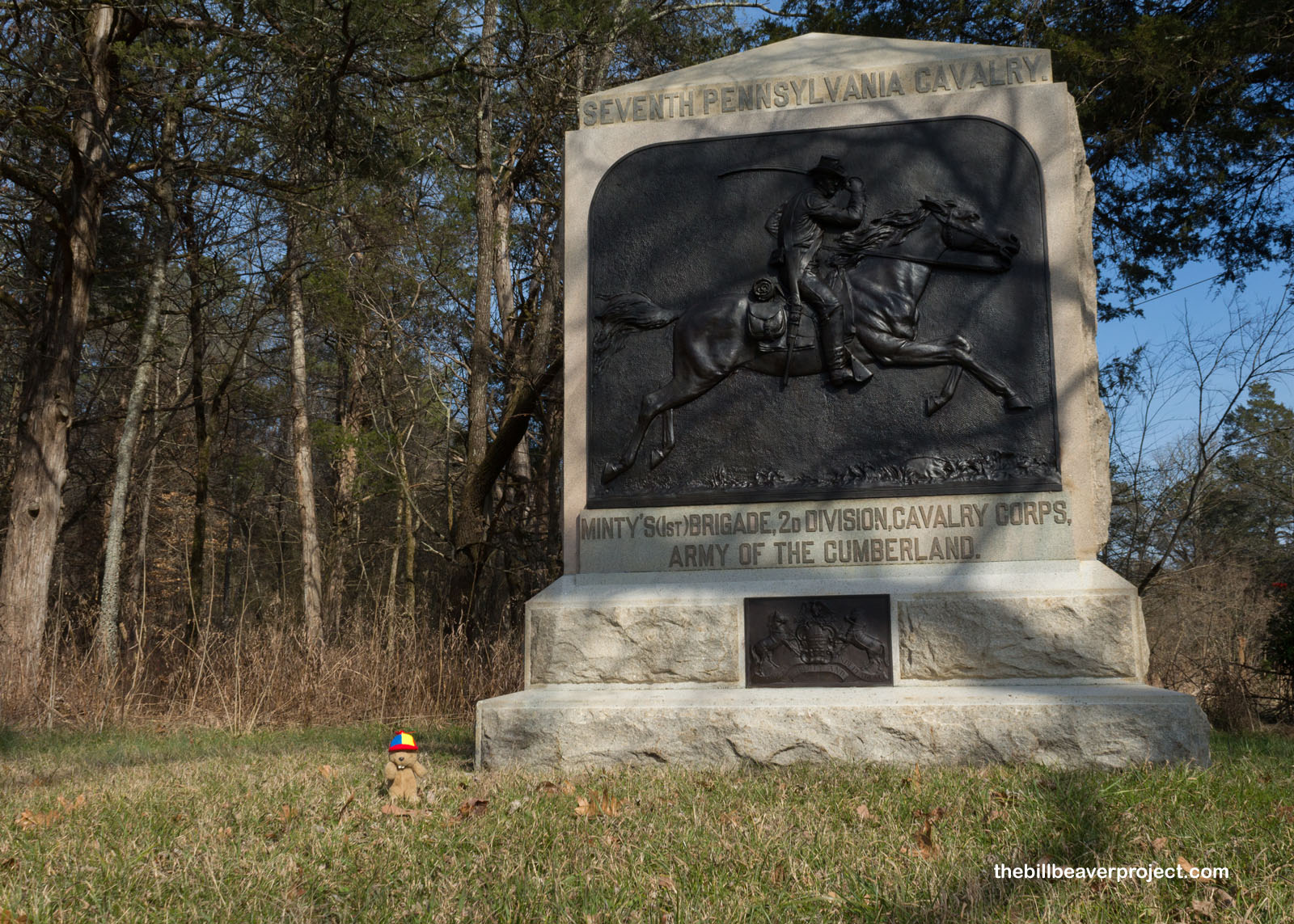 |
Here, by the monument to soldiers from Florida, John C. Breckinridge, once James Buchanan’s vice president, led a Confederate push through the Union lines on their way south!
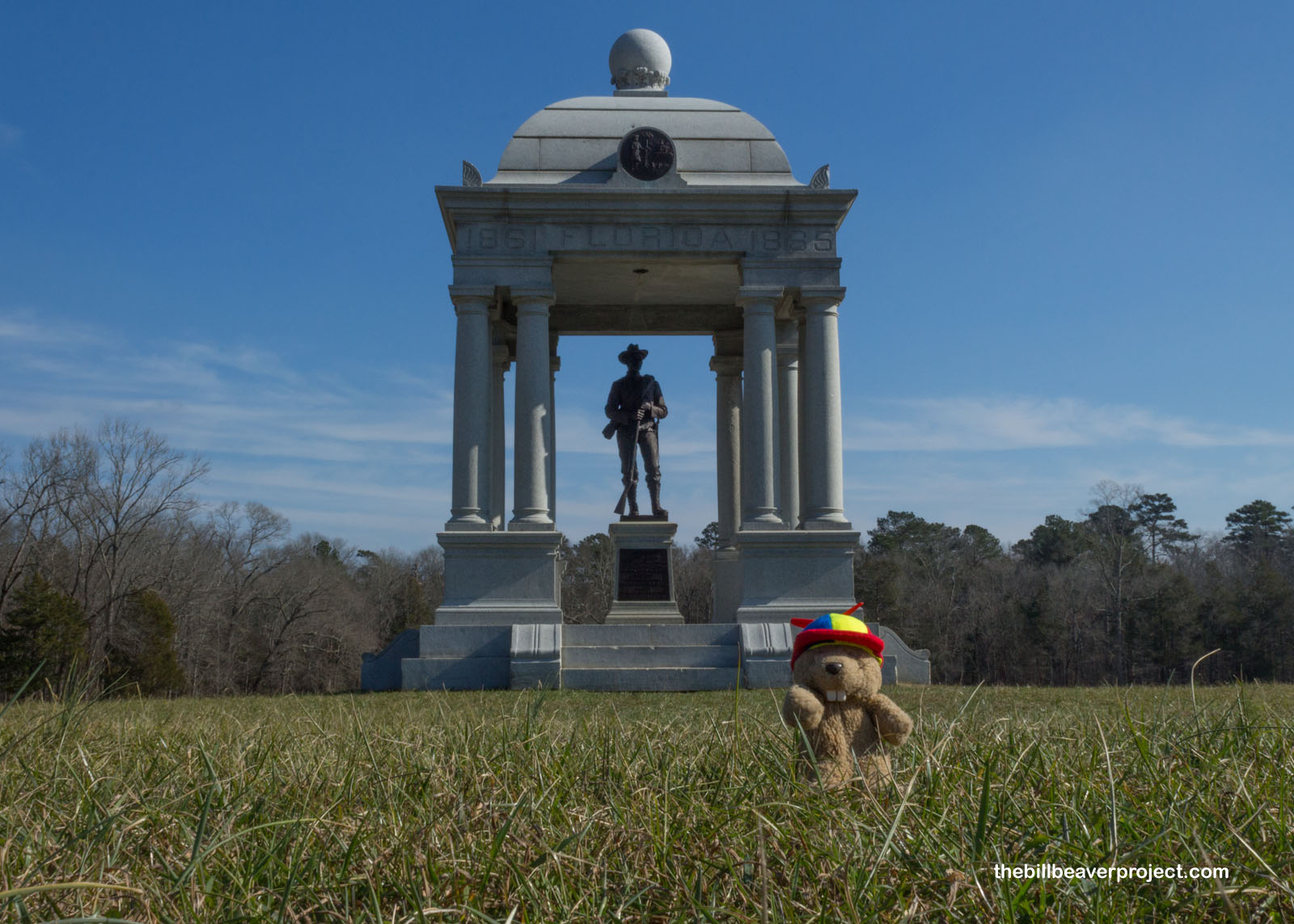 |
Here, where monuments commemorated the 15th US Infantry, the Union dug in and were able to repel Confederate attacks for a while!
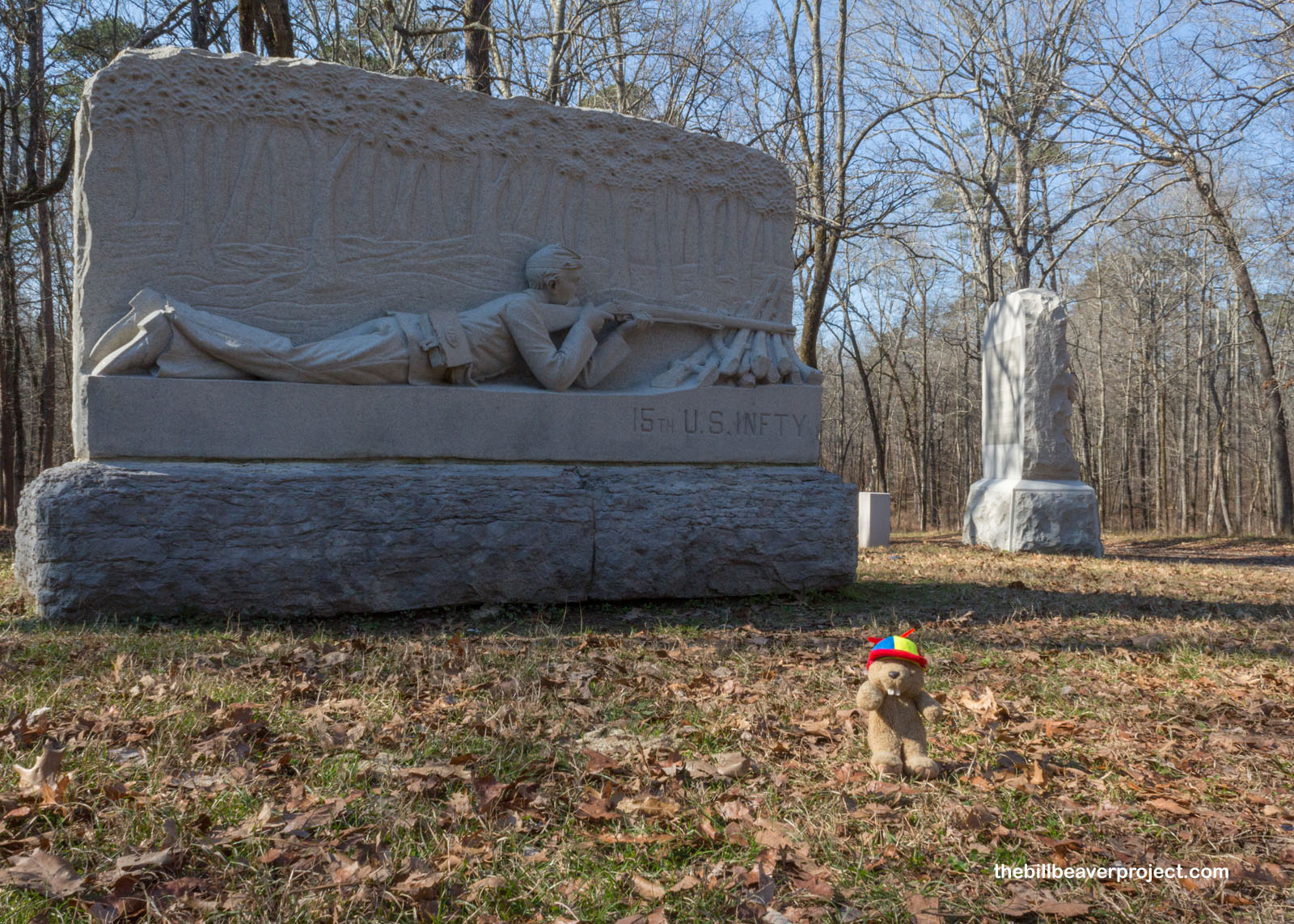 |
I also had to note, as I went along, that were were lots of acorns on the Union memorials, like this jumbo one memorializing the 2nd Ohio Infantry! The acorn became a symbol for the Army of the Cumberland and especially its XIV Corps, because of a time when they got stranded in the woods and had to eat acorns to survive!
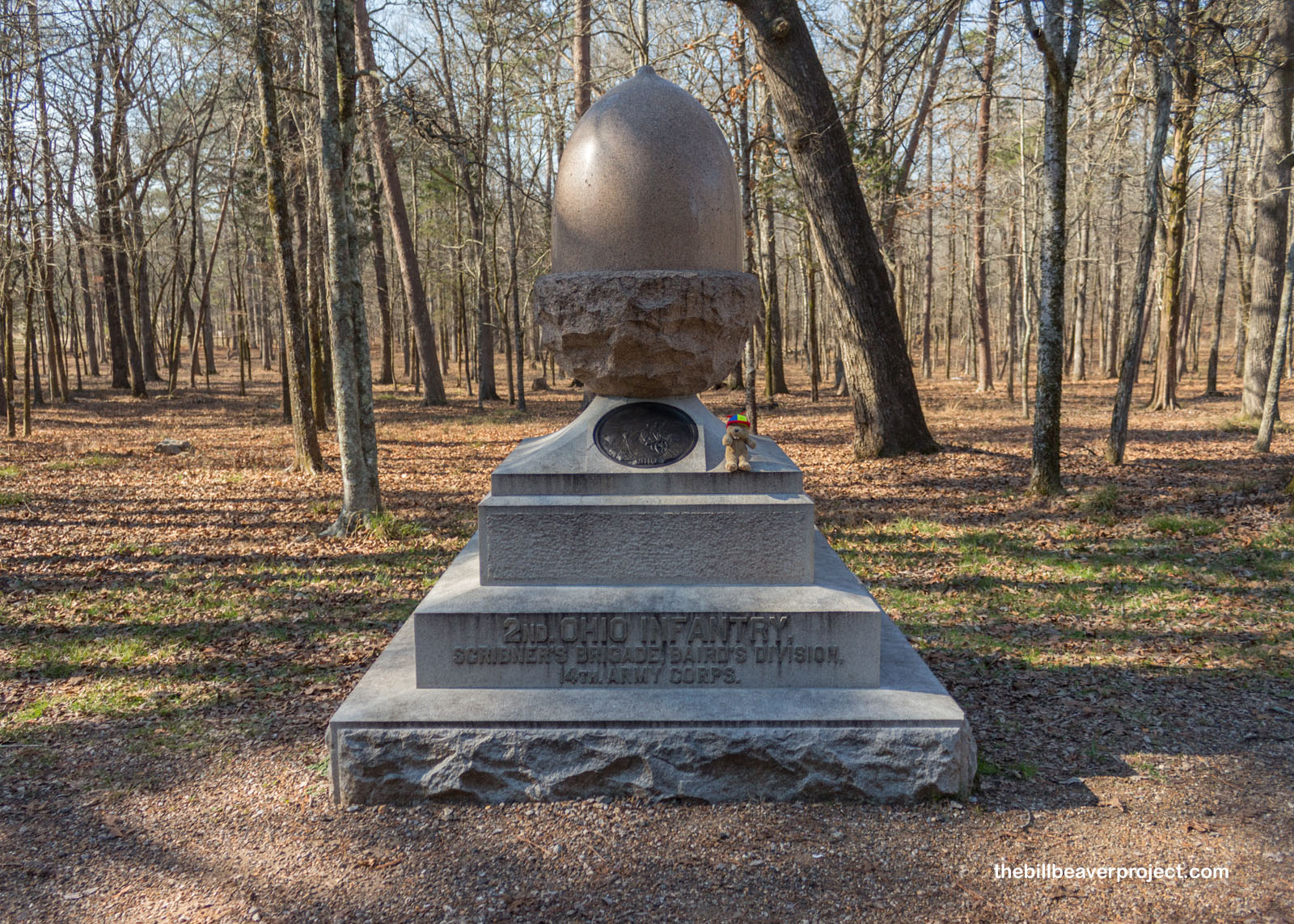 |
The park was also scattered with pyramids of cannonballs, 15 by 15, that marked where commanders fell. Here, Colonel Edward A. King was killed after General Rosecrans acted on bad information and moved two divisions together, opening a major gap in Union ranks! The Confederates were quick to exploit that gap!
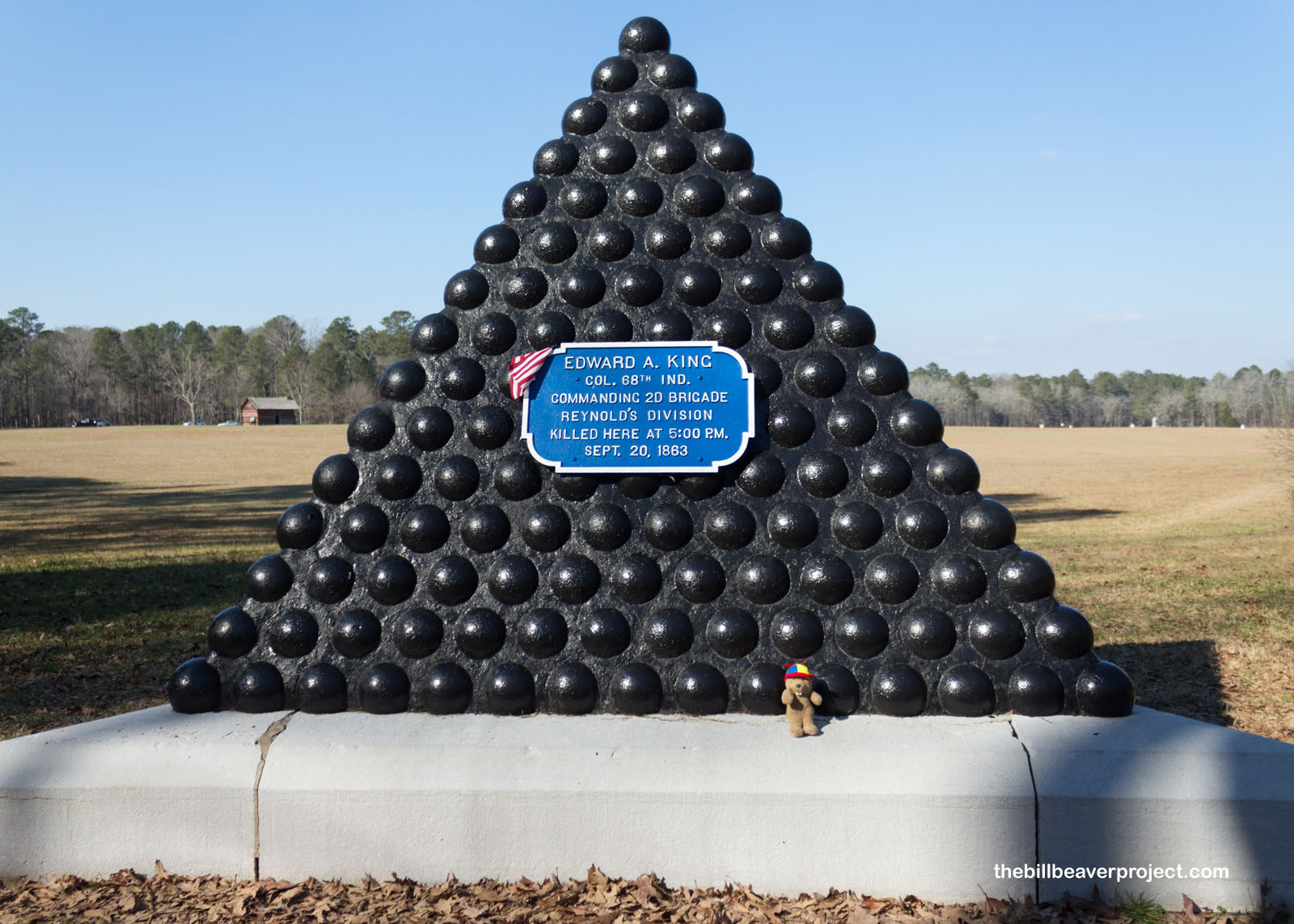 |
The Confederates burst through this gap by the cabin of George and Mary Brotherton, splitting the Union Army in two! While this was disastrous for the soldiers, it also put the Brothertons in a real jam! Luckily, they, their cabin, and four of their cows lived to tell the tale!
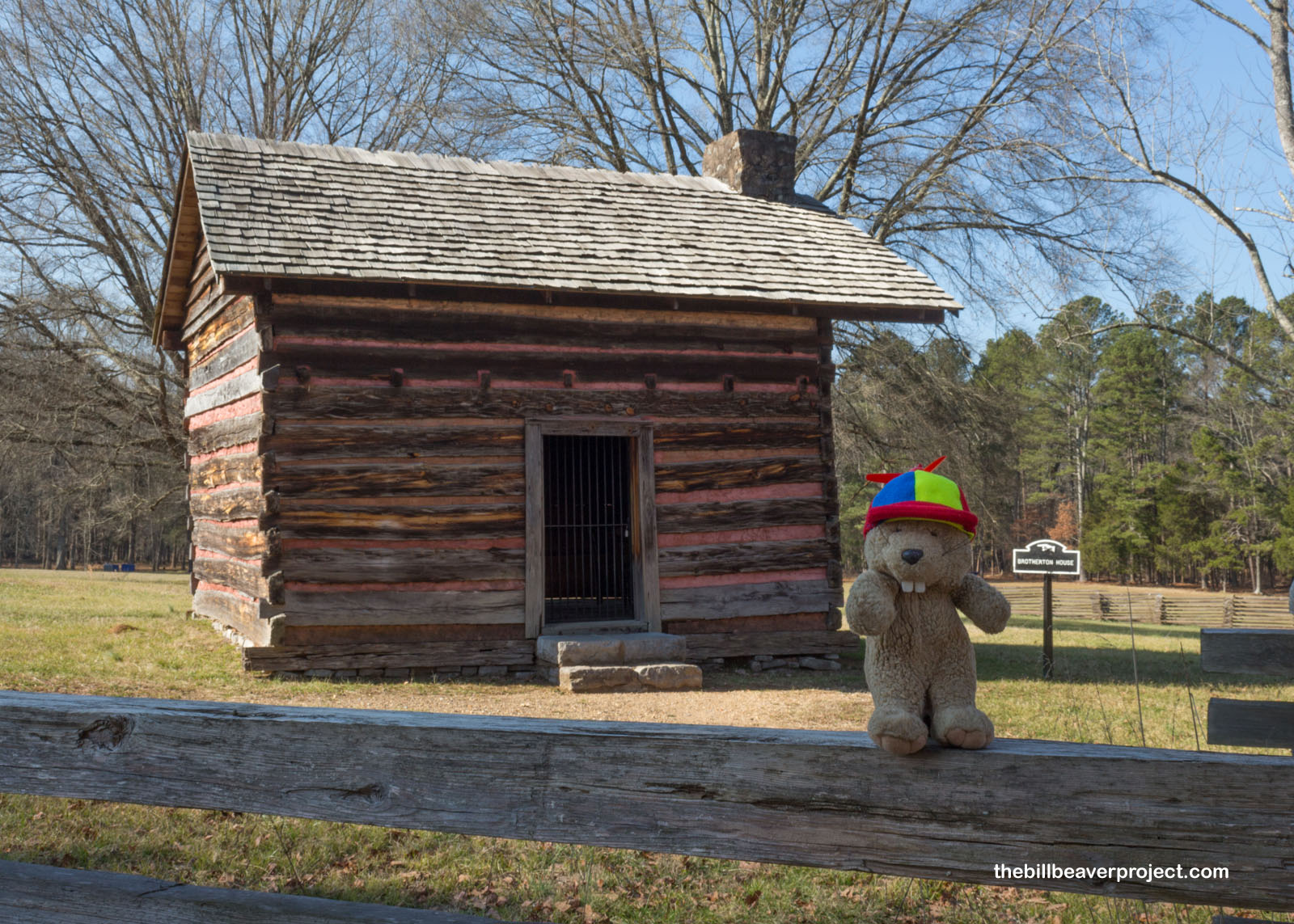 |
This giant turret marks the spot where the Union paused that Confederate rupture. It’s one of the park’s most recognizable monuments and commemorates Union Colonel John T. Wilder’s “Lightning Brigade,” which charged in with 7-shot Spencer repeating rifles, and drove the Confederates back, the only Union victory that day!
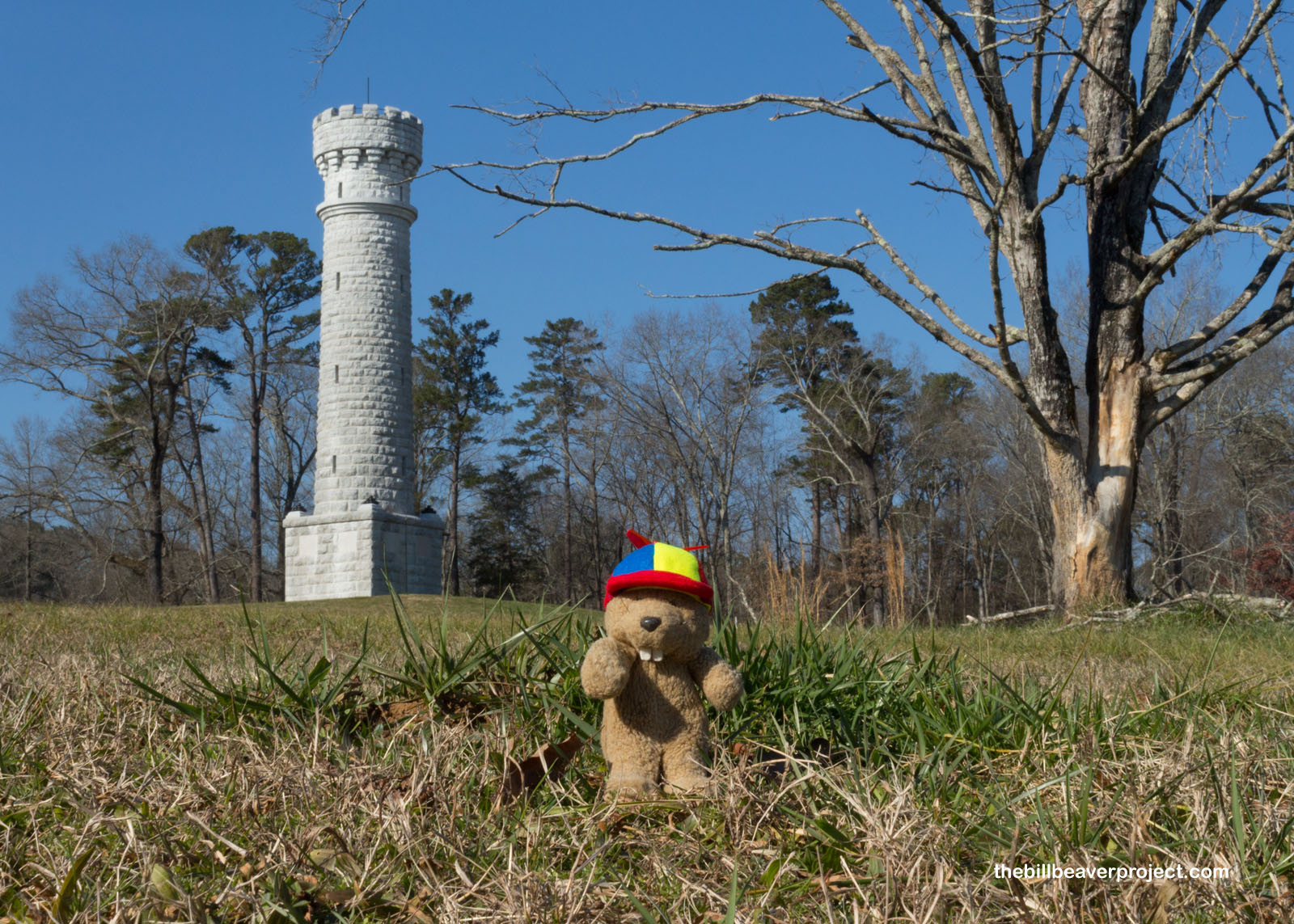 |
However, Wilder’s defense wasn’t enough to undo the damage from General Rosecrans’ flub, and the attack on the field behind me completely overwhelmed the last of the Union stronghold and forced them to flee the battle back to Chattanooga!
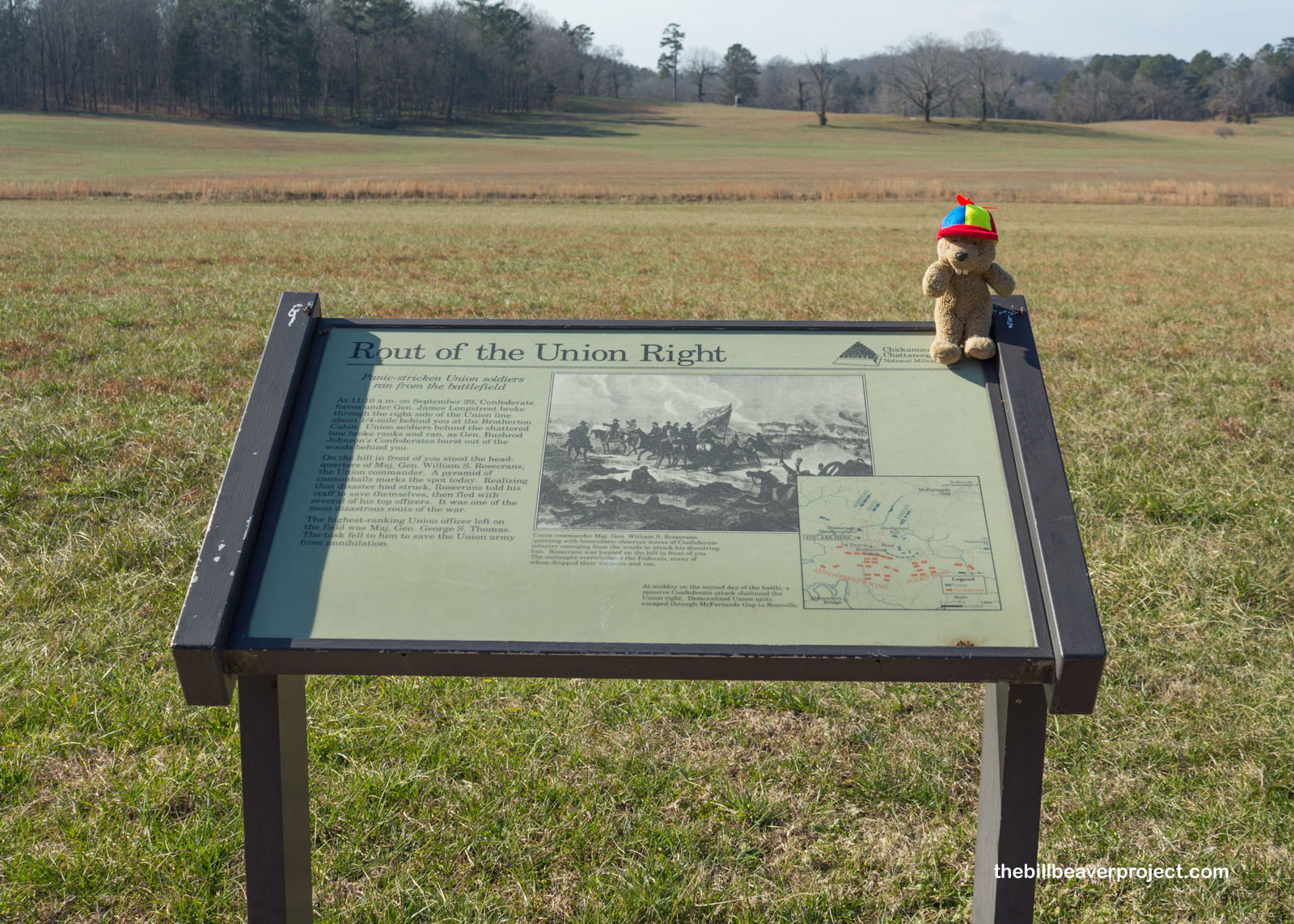 |
Here at Snodgrass Hill, the Union soldiers held out as long as they could, taking over the cabin of the Snodgrass family as a hospital until darkness let them slip away back to Chattanooga. General Rosecrans was promptly removed from command, and General George Thomas took over. Only this battle was far from over! Confederate forces, not so eager to give up their transportation hub, followed the Union retreat and set up a siege on the city from key points on its outskirts. One of those key points was my next stop, bringing me up into the Volunteer State for the first time!
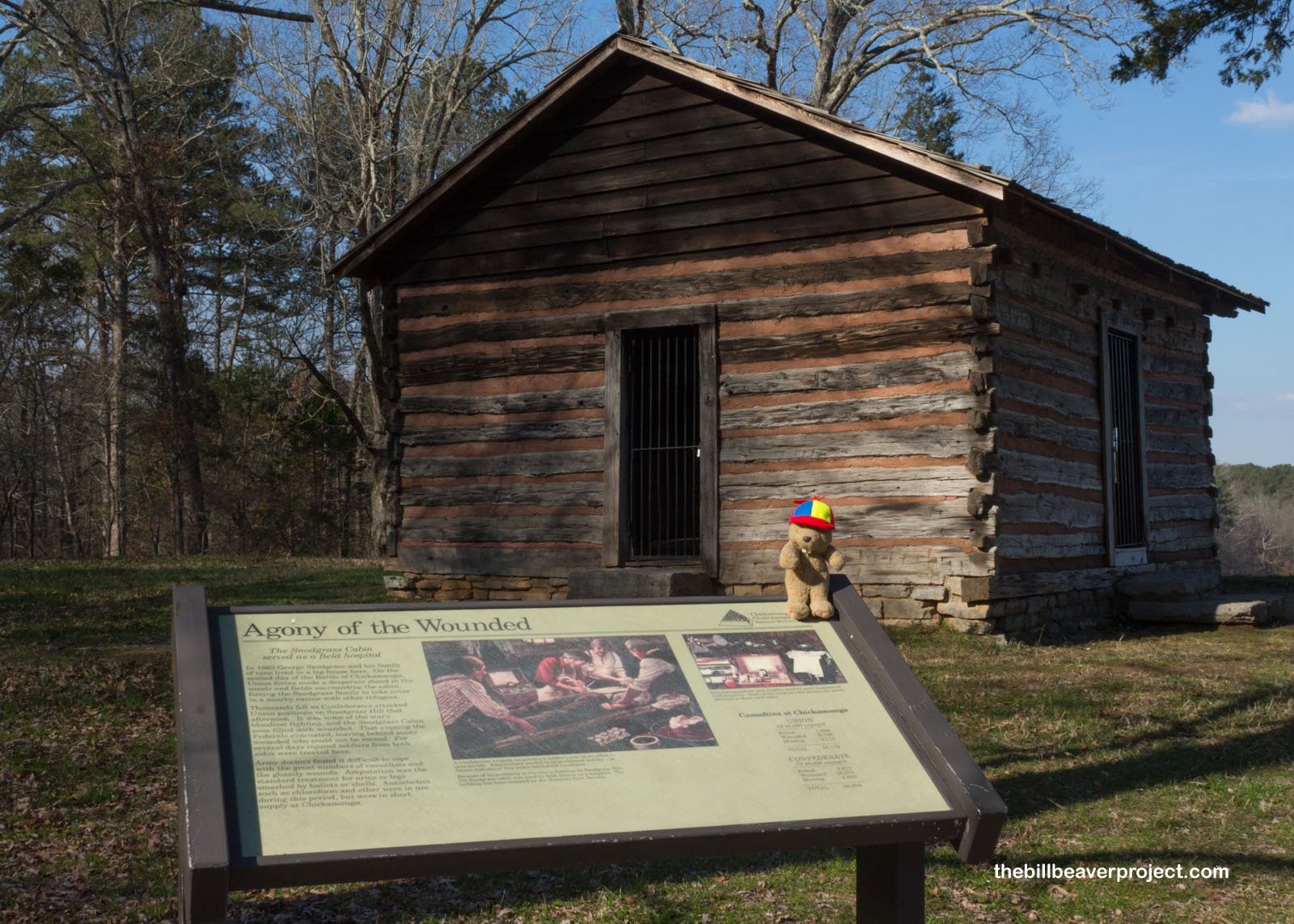 |
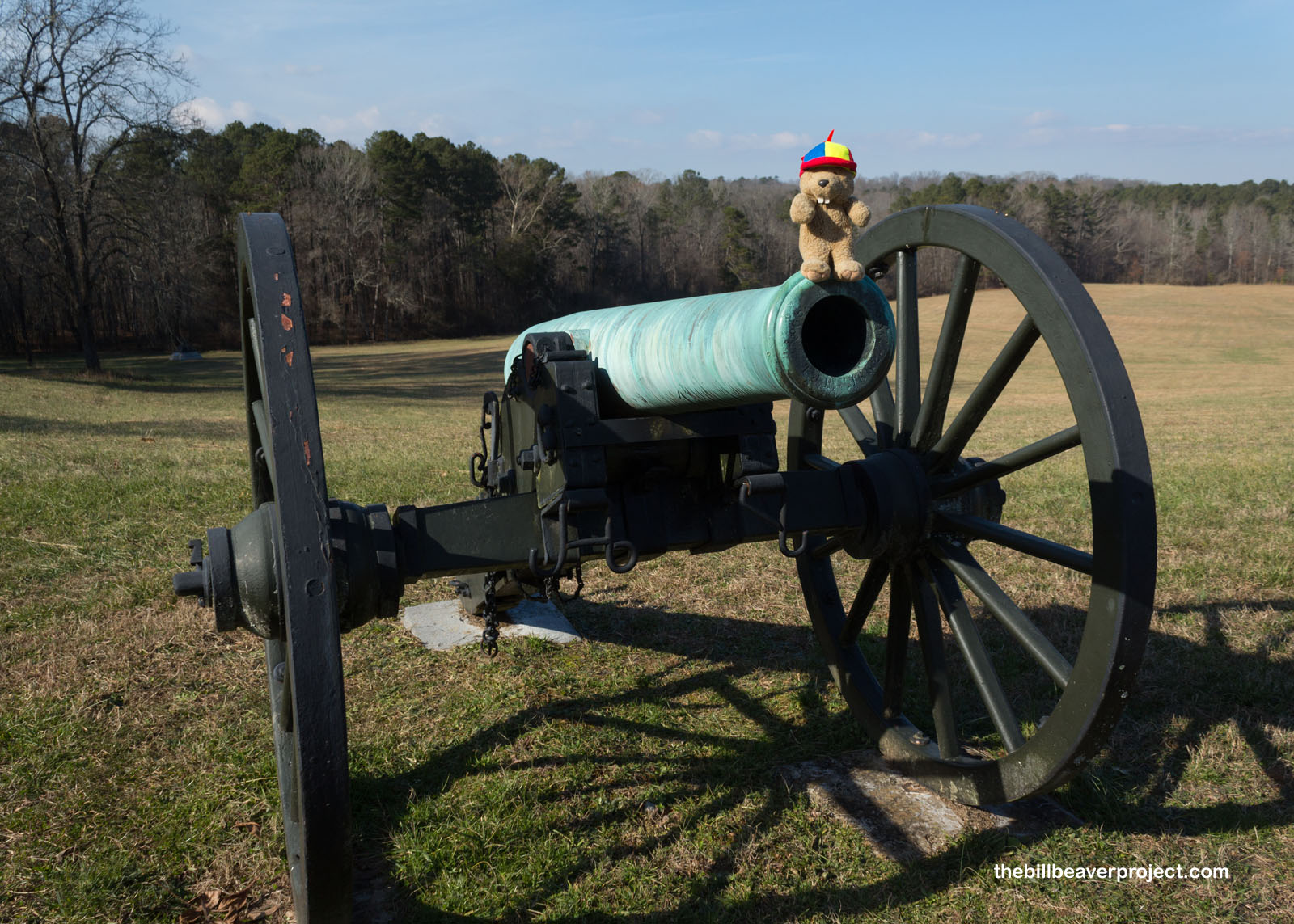 |
For an entire month, Confederate soldiers disrupted supply lines and harried troops from Lookout Mountain and nearby Missionary Ridge. If they couldn’t beat the Union head-on, they’d starve them out of Chattanooga! Point Park in Chattanooga is a memorial to the conflicts at this scenic lookout!
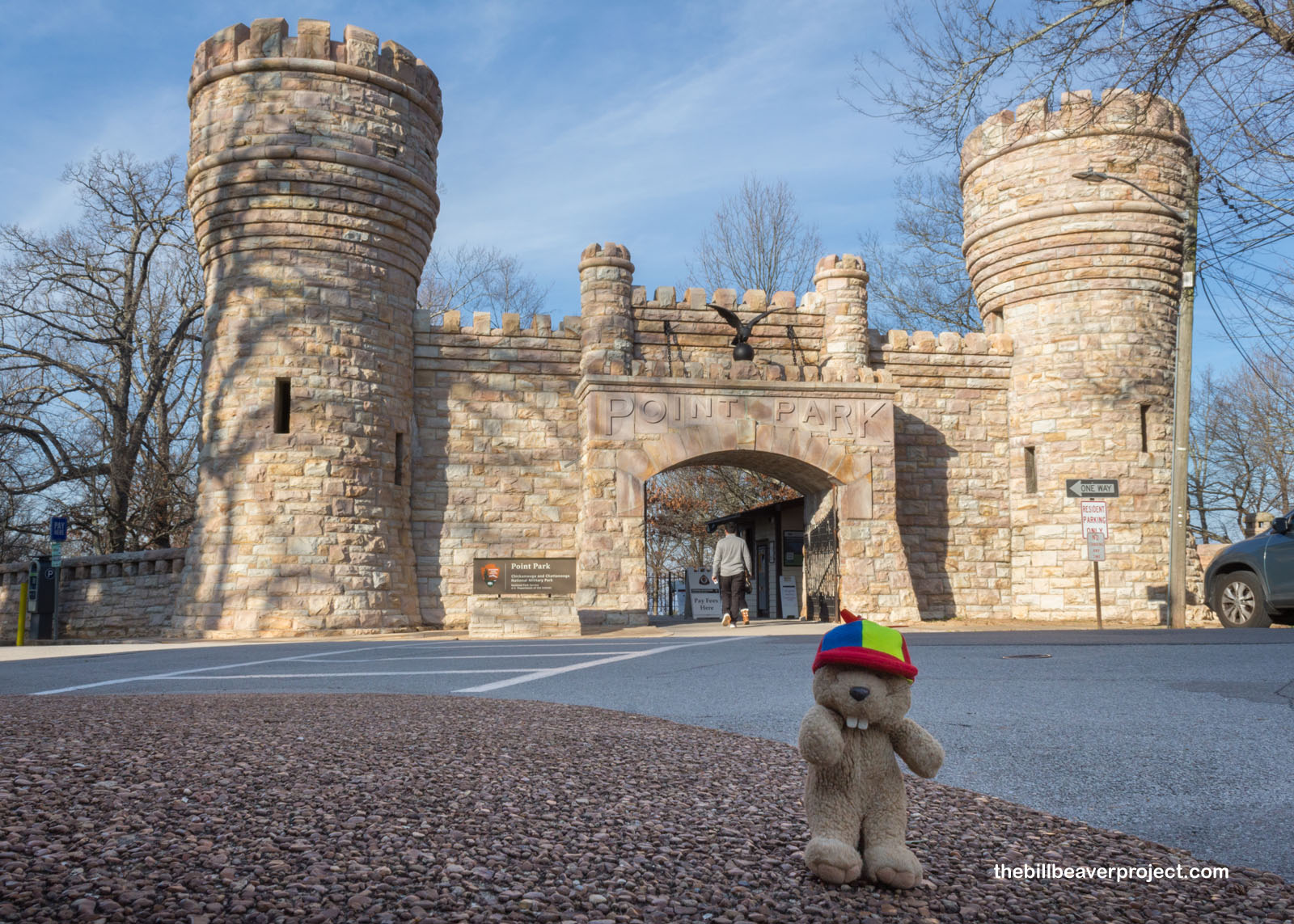 |
While today, the park’s centerpiece is the New York Peace Monument, made from a blend of Tennessee marble and Massachusetts pink granite, this high point was certainly not a symbol of peace in late October 1863! This was a key Confederate vantage point overlooking Chattanooga, but high as it was, they sure didn’t see what was coming next!
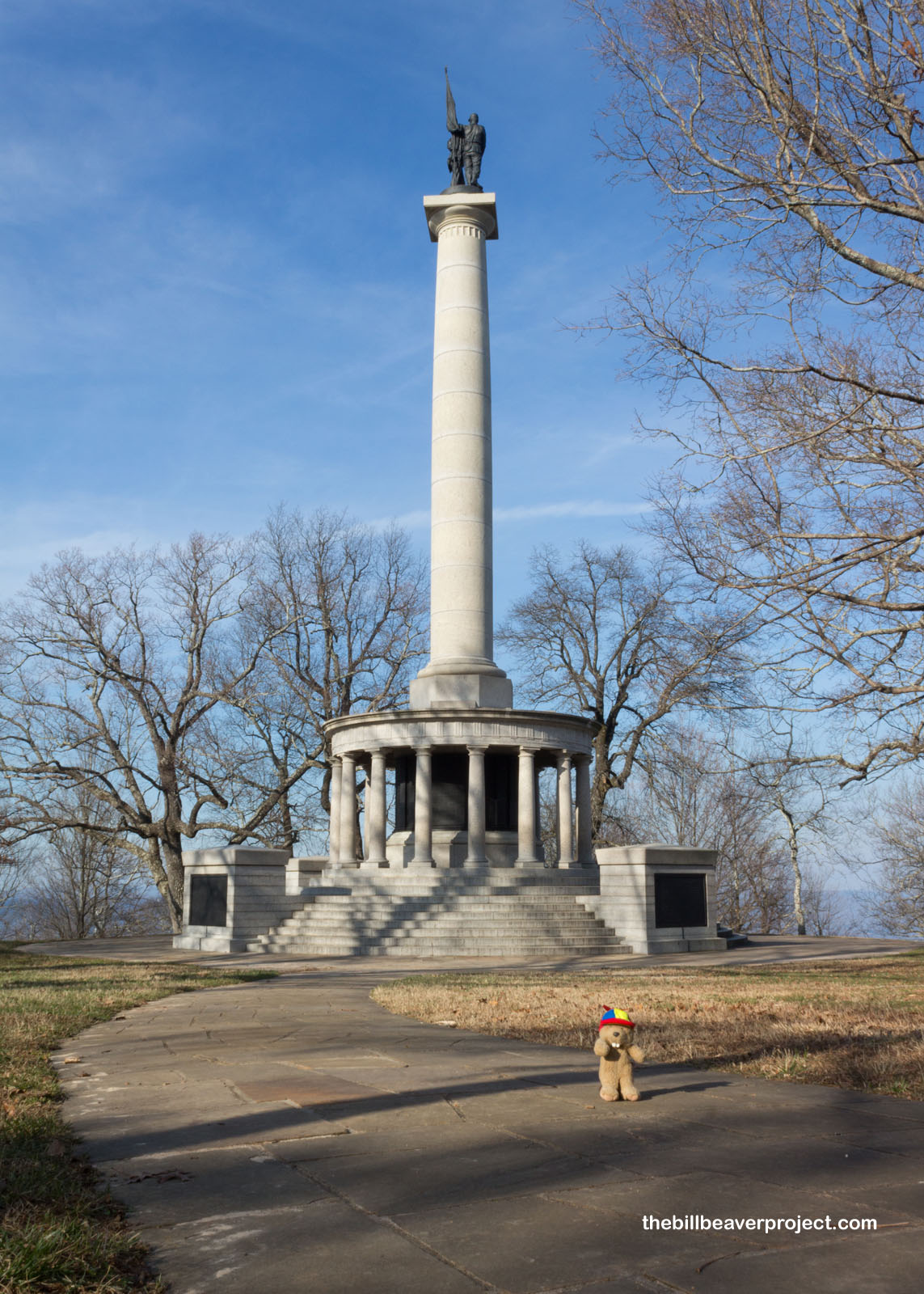 |
That’s because General Ulysses S. Grant arrived late in October with reinforcements, some of whom snuck up along Lookout Mountain by night and won control of the nearby valley. That gave the Union their supply route back, and they called it the “Cracker Line!”
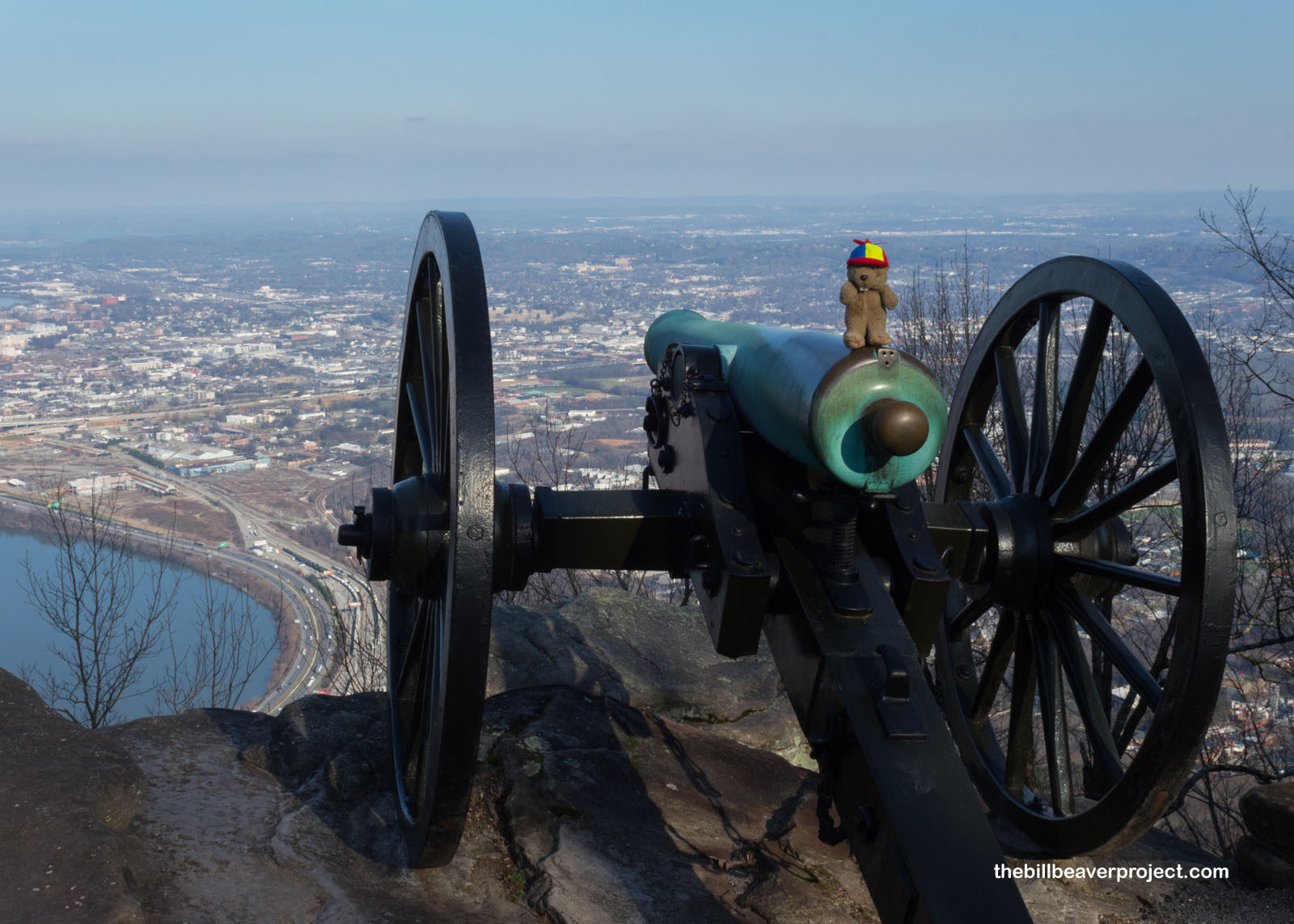 |
Supplies were nice, but victory tasted even better! On November 23, Union soldiers burst out of Chattanooga like a supernova, headed for the Confederate stronghold at Missionary Ridge. Meanwhile, another group attacked Lookout Mountain! Shrouded in fog, the attack here became known as the “Battle Above the Clouds” and effectively made the Union “Kings of the Mountain!” Unlike the later battle at Kennesaw Mountain, Union forces then pushed all the way up Missionary Ridge and toppled the Confederate defenses right off the summit! That cost General Bragg his military career, and the Confederate troops retreated south into Georgia, where we all know what happened the following year!
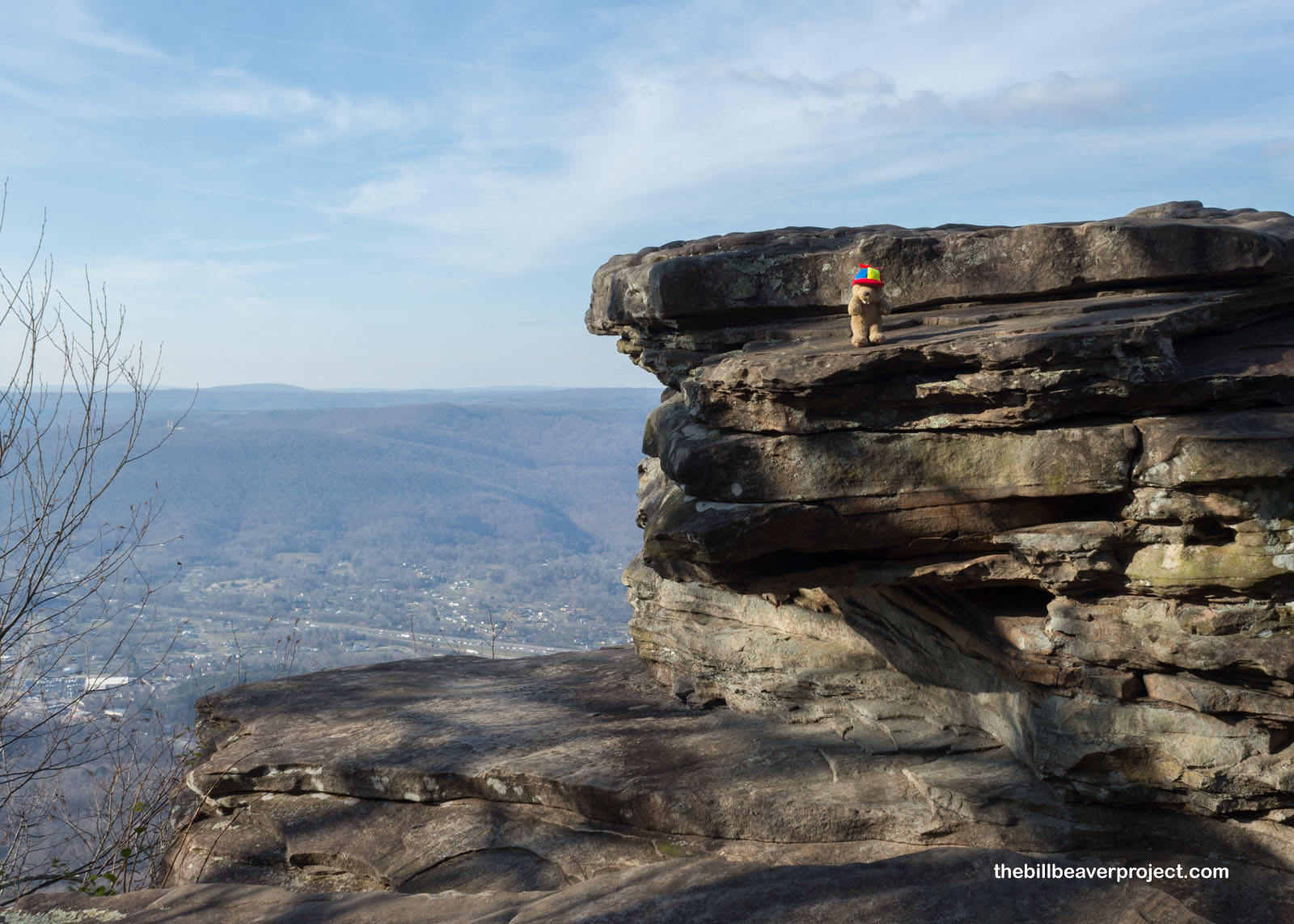 |
By this point in the day, the light was getting a little long, and I had one more park to see before sunset. Taking a quick detour, because I’d be a fool not to, I swung by the Chattanooga Choo-Choo, a Nationally Registered hotel made famous in 1941 by Glenn Miller and His Orchestra! While this was not the original station used as a field hospital during the Civil War, it was the first station in the South built to link rails with the North (Cincinnati)!
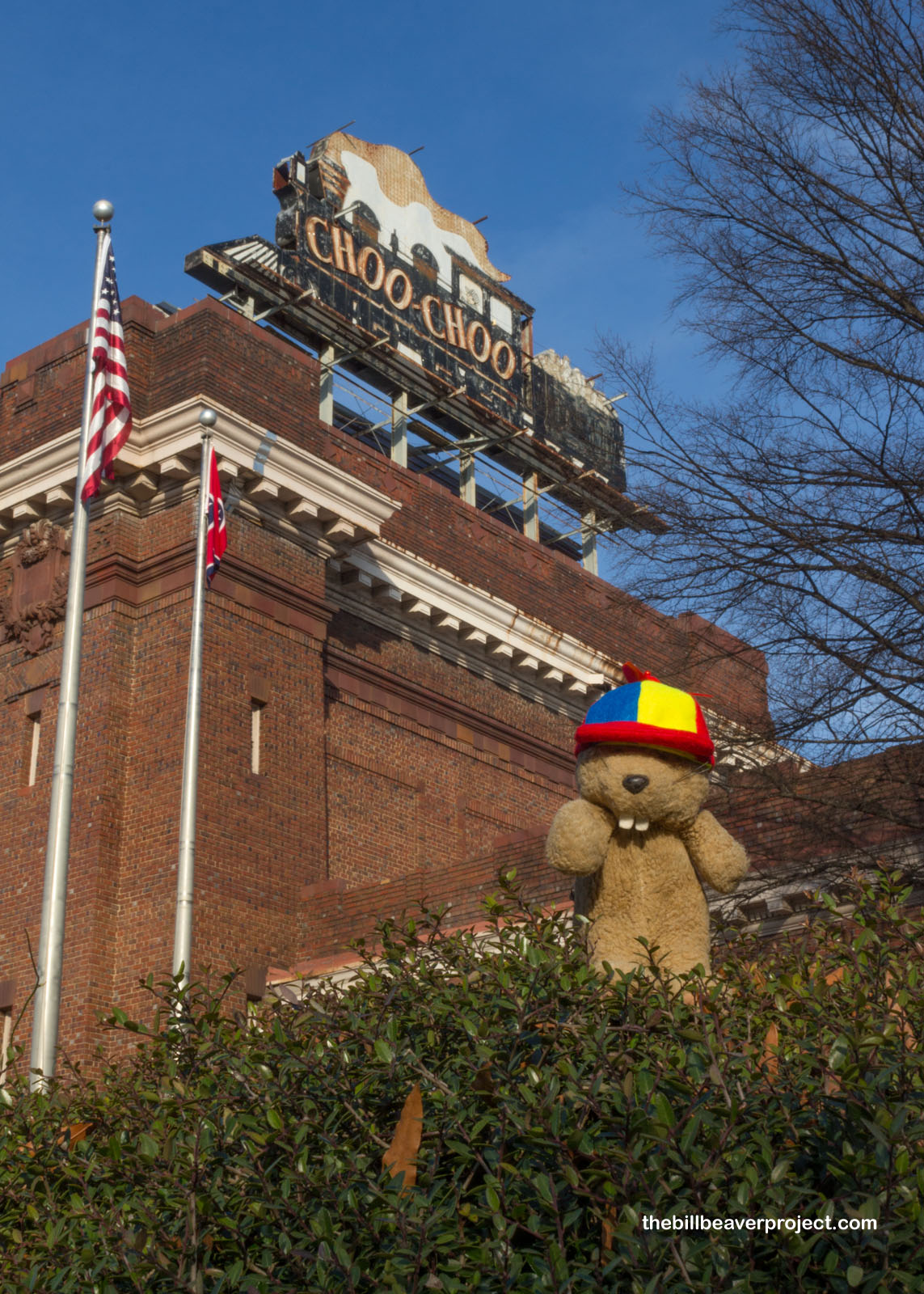 |
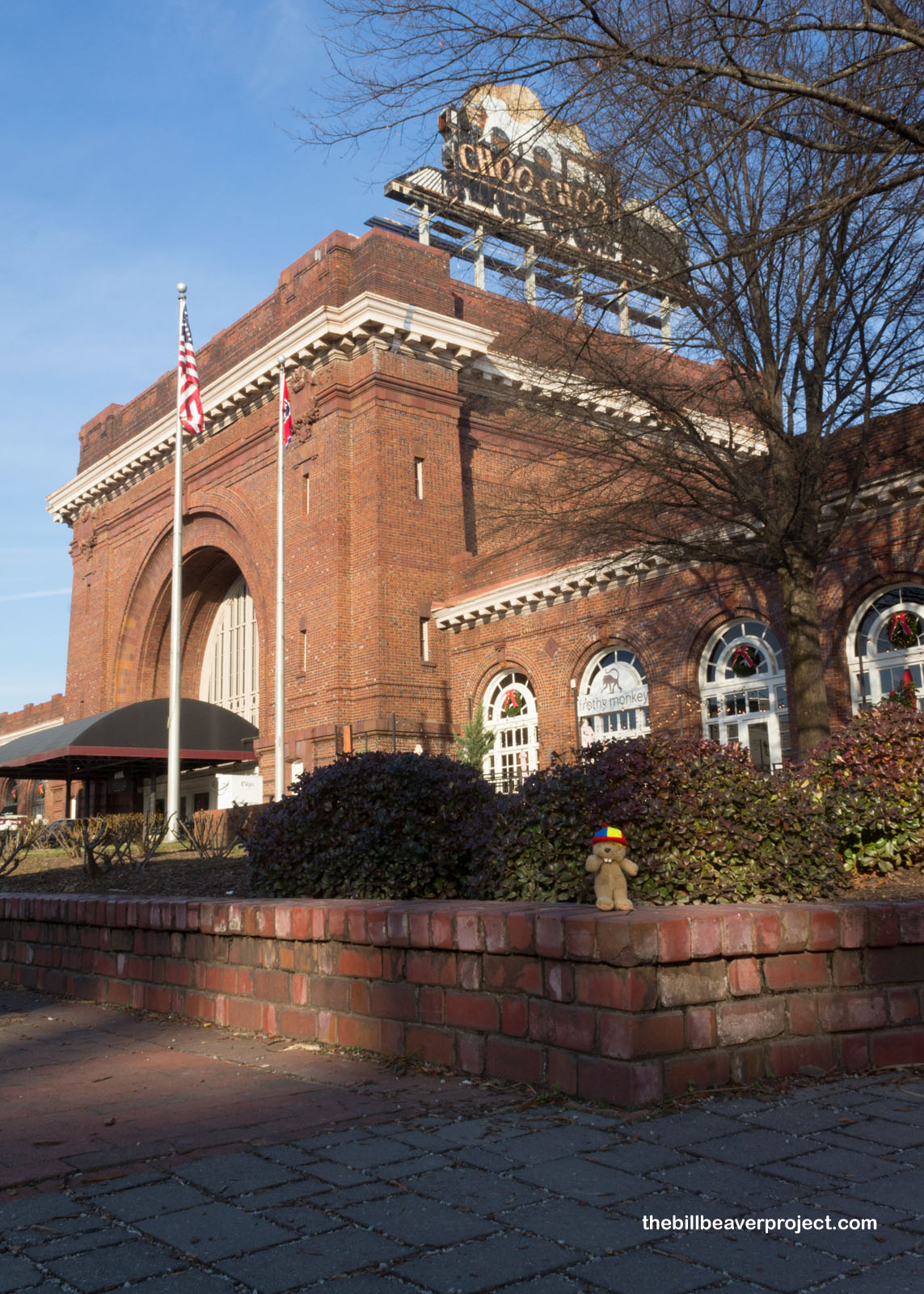 |
But time is rarely the pal of adventure, and even though I got the benefit of changing from Eastern to Central Time, I still had to hustle to Russell… Cave that is, just across state lines into Alabama! When I was looking at this area before traveling, and realized Russell Cave wasn’t a touring kind of cave, I thought, what the heck? I’ll check out this national monument tonight!
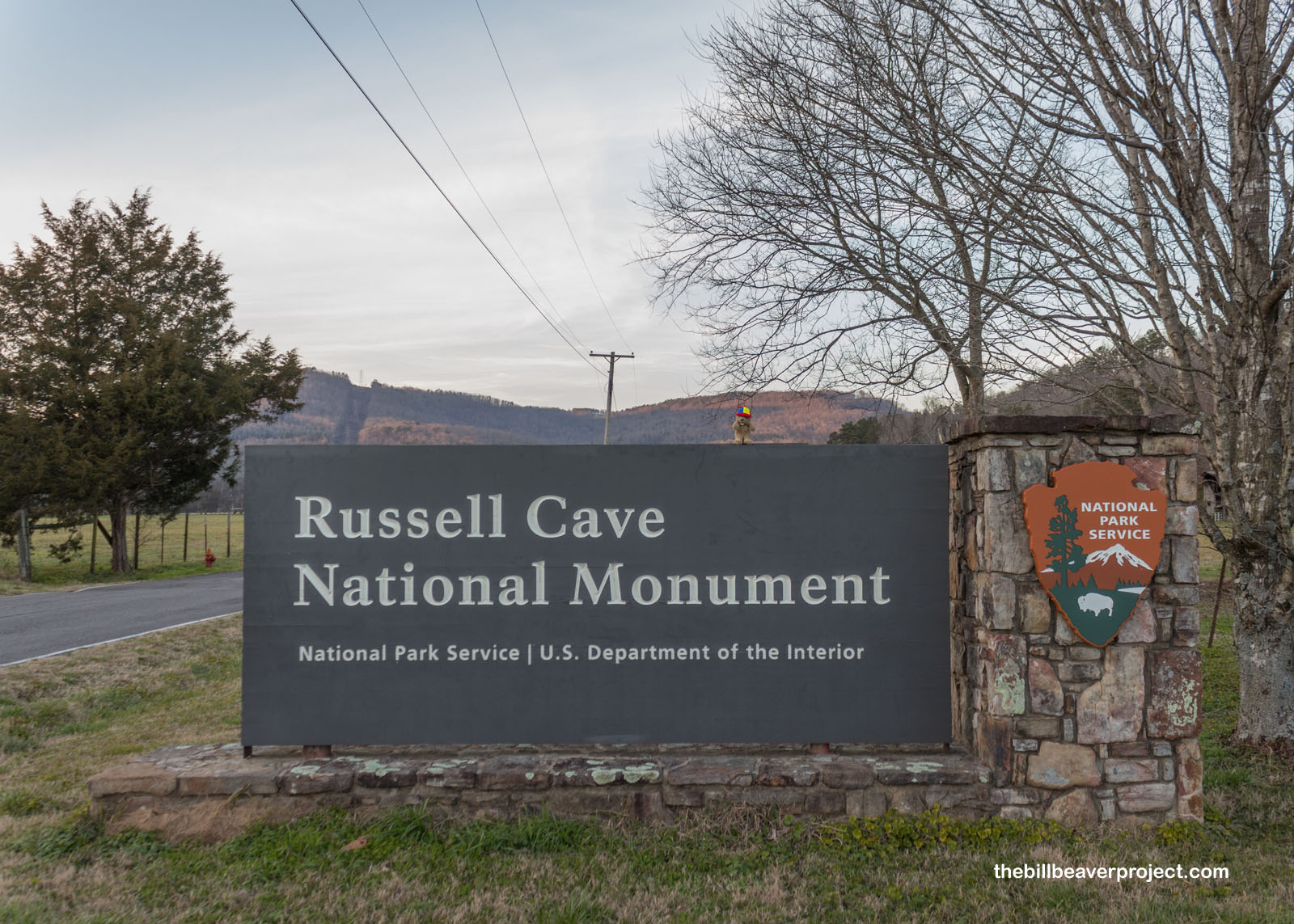 |
With only one hour before the park closed, I was left to explore on my own. Passing the kids activity area, where young history buffs could learn to throw an atlatl, I strolled along the short boardwalk leading from the visitor center to the main cave!
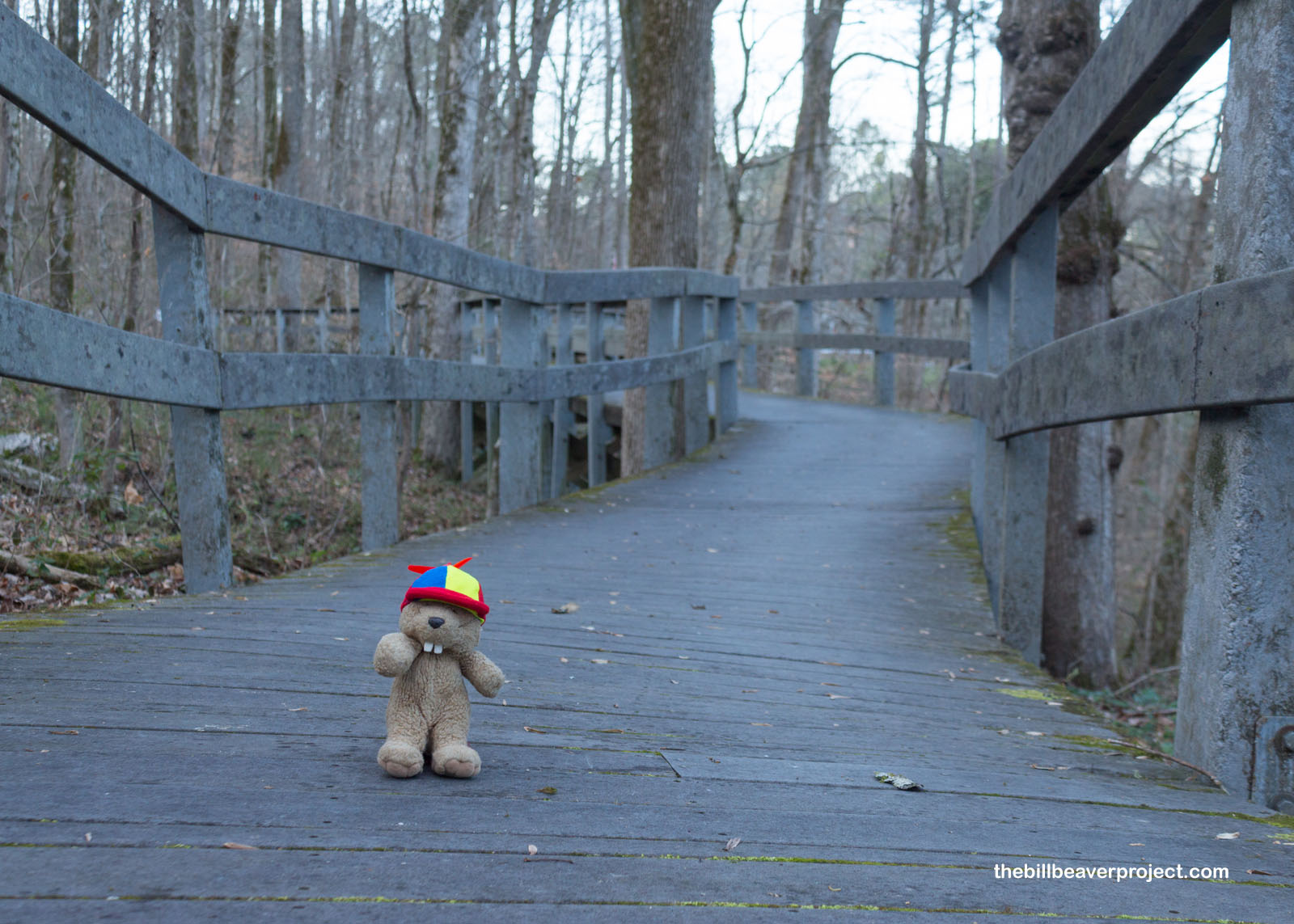 |
Russell Cave was not what I expected at all! It was a double cave with a lovely turquoise river flowing through it! Though today it’s named for Colonel Thomas Russell, a Revolutionary war veteran who owned the property when maps of the area were drawn, this cave has been a shelter for Native people for at least 10,000 years!
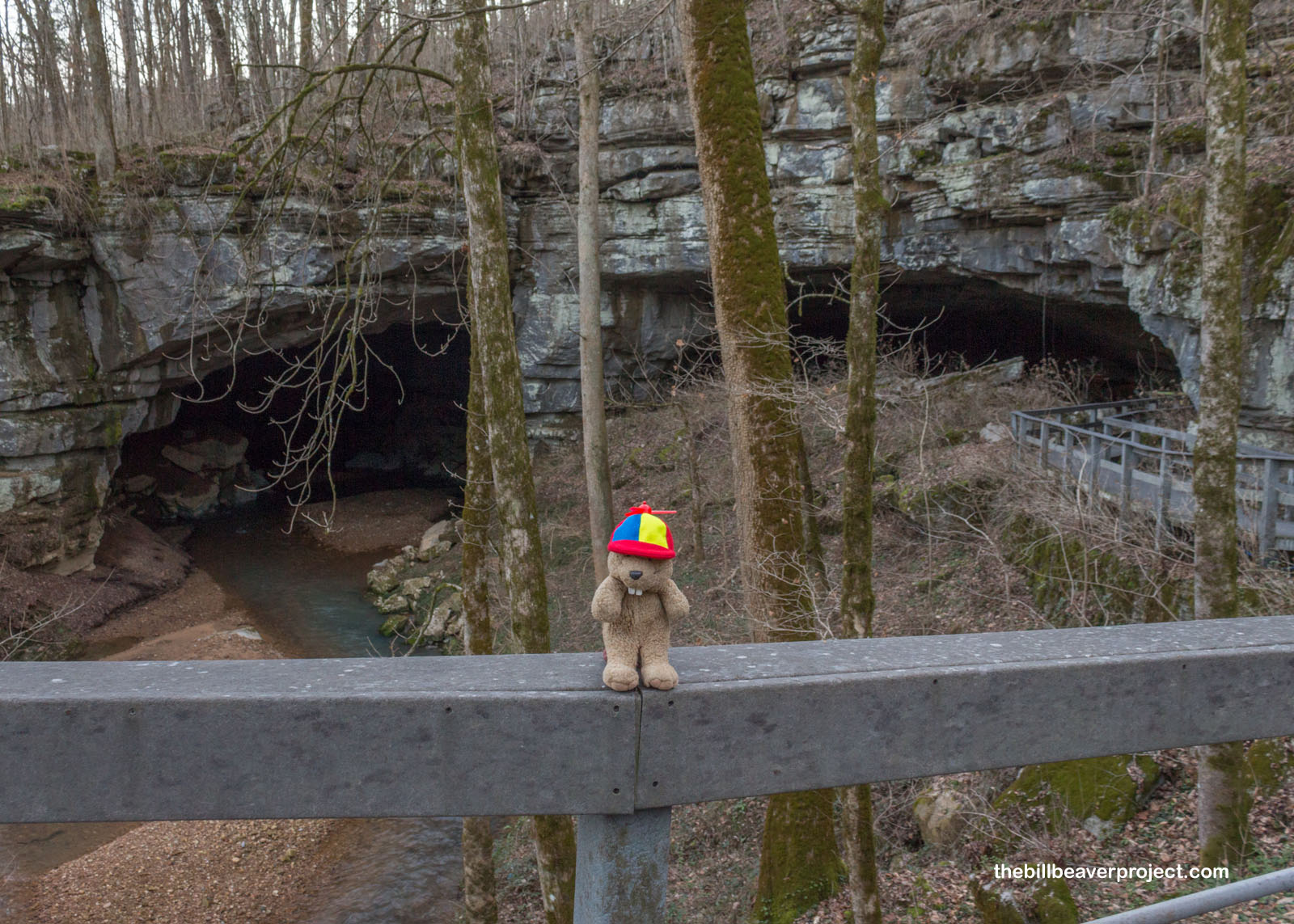 |
There sure was enough space for lots of folks in this cave! Evidence from digs starting in 1956 has found leftovers from four main periods: Paleo-Indian (10,000-14,500 years ago), Archaic (3,200-11,450 years ago), Woodland (1,000-3,200 year ago), and Mississippian (500-1,000 year ago). These findings range from flintknapped arrowheads to abalone jewelry imported from the coast, a huge succession of culture and sophistication! It isn’t super clear when the caves were vacated, since modern Cherokee folks preferred log houses to caves, but what is clear is that this is a special place that’s jam-packed with hints about life long ago!
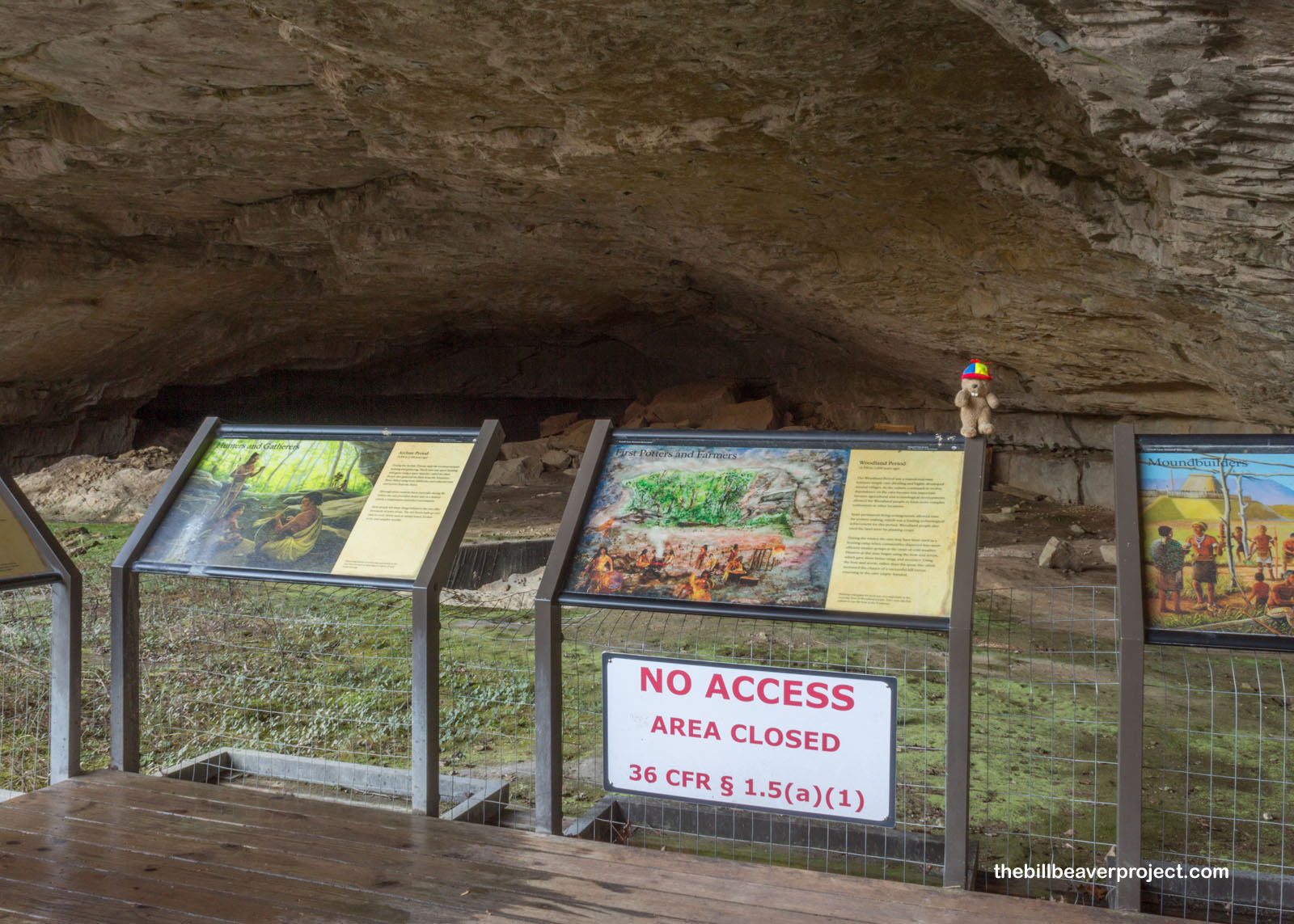 |
From this lookout observation deck, there wasn’t much further I could go, so I decided to try out a new gizmo that Master Sae sent me for Solstice. It turns out his winged friends made a technological beak-through, so now I’m testing their prototype flutter phone! I think it’s going to help me capture pieces of my adventures that would have been out of reach before. Check it out, and tell me what you think!
Meanwhile, I’ve been running around all day long. At least in January, the sun sets early, which forces me to cut off at 12 straight hours of adventuring. Don’t worry! I’ll be back at it again tomorrow, exploring important civil rights sites in Alabama, but for now, I’m going to settle in for some slumber at the historic Hotel Finial!
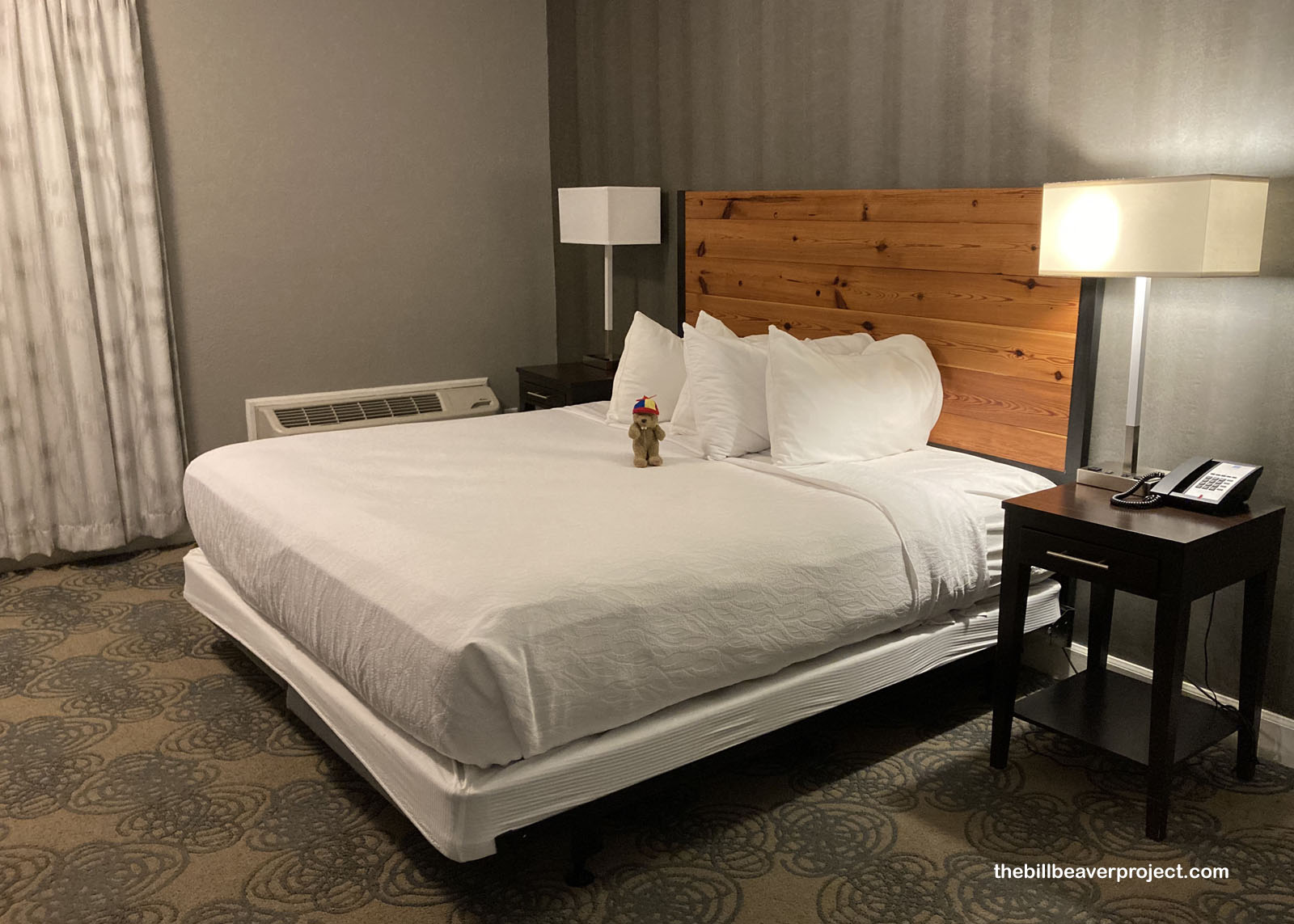 |
Until tomorrow, Yellowhammer State!

 More 2022 Adventures |
Total Ground Covered: 312.0 mi (502.1 km) |
 Next Day |
